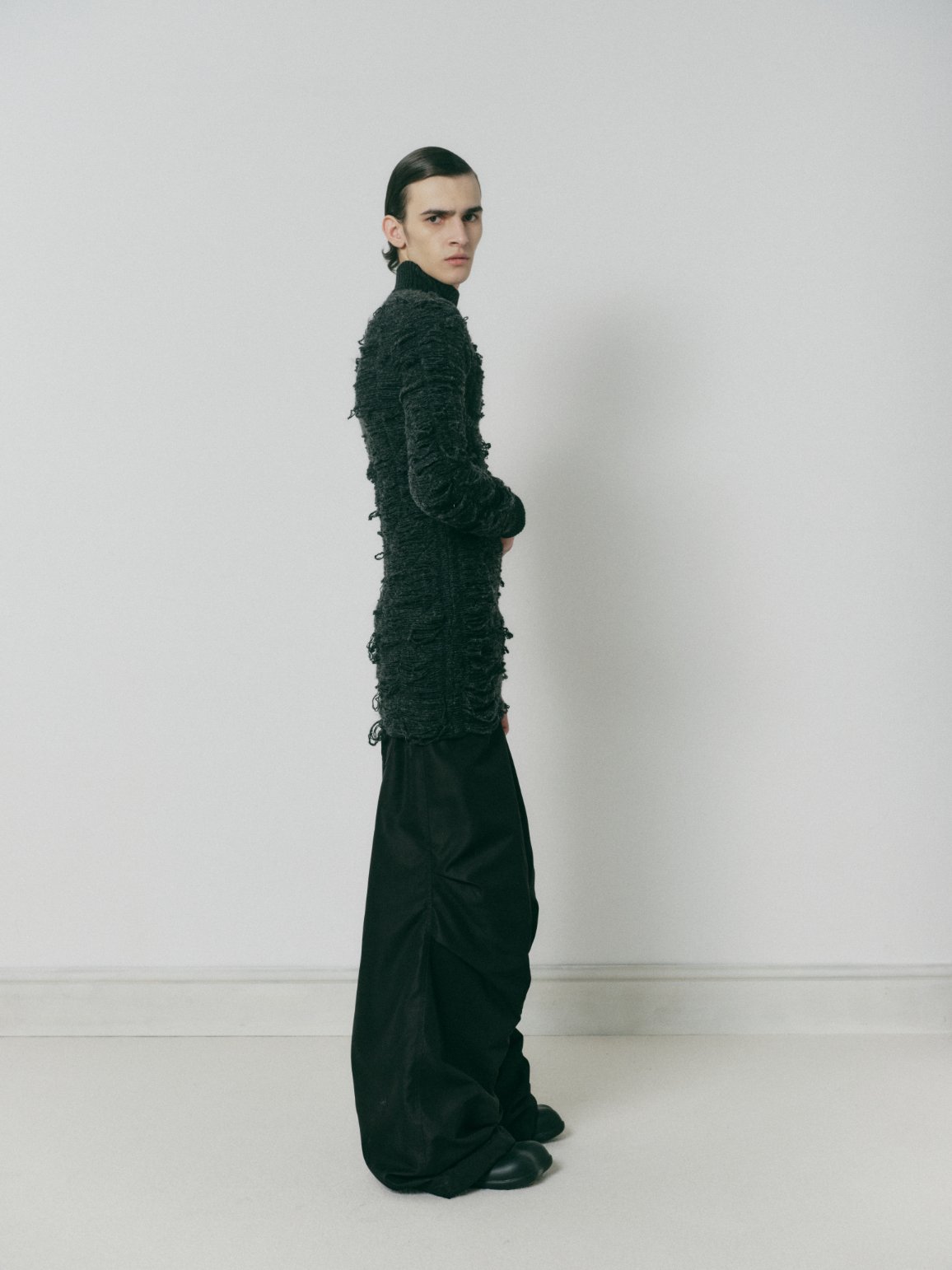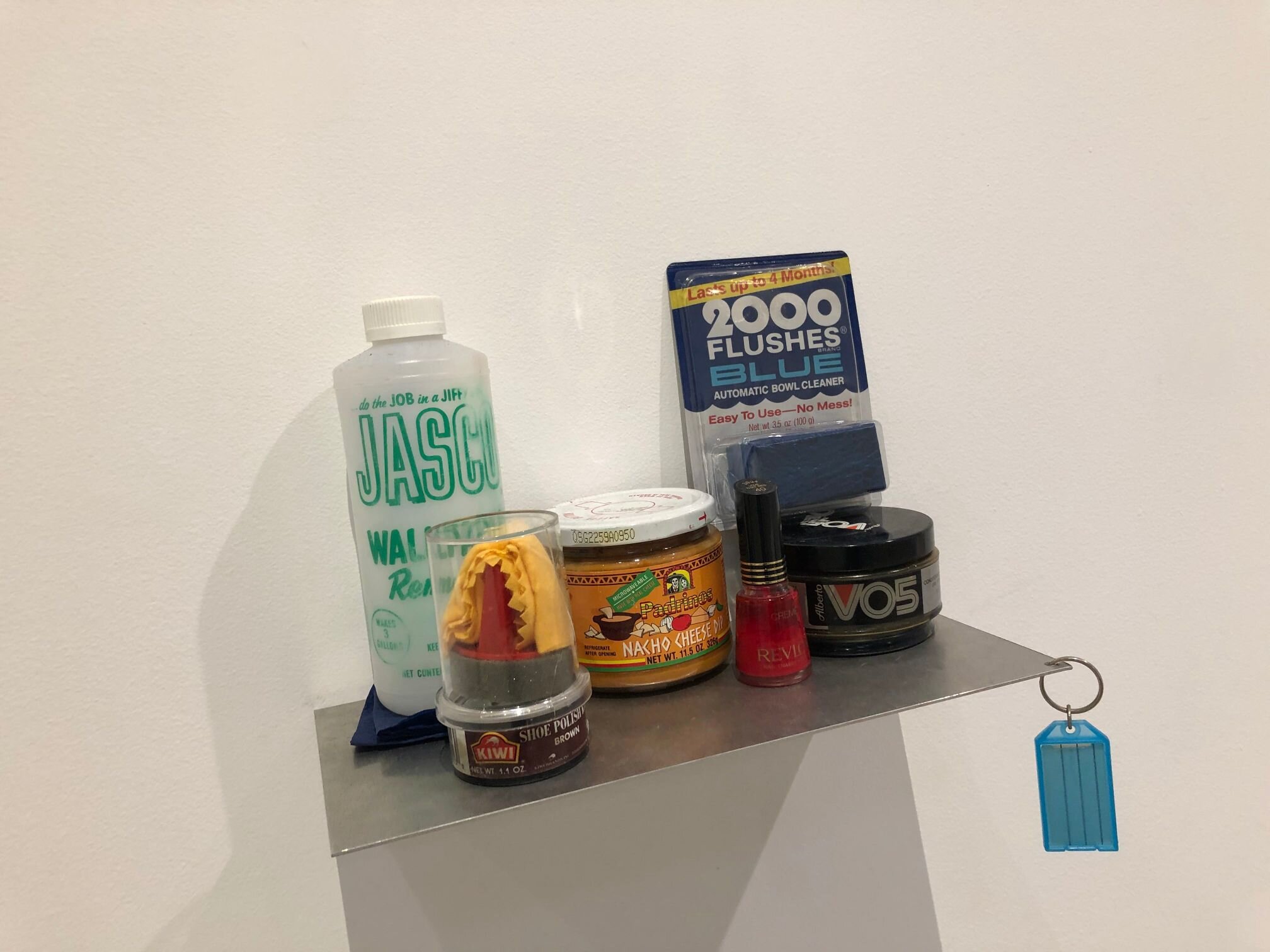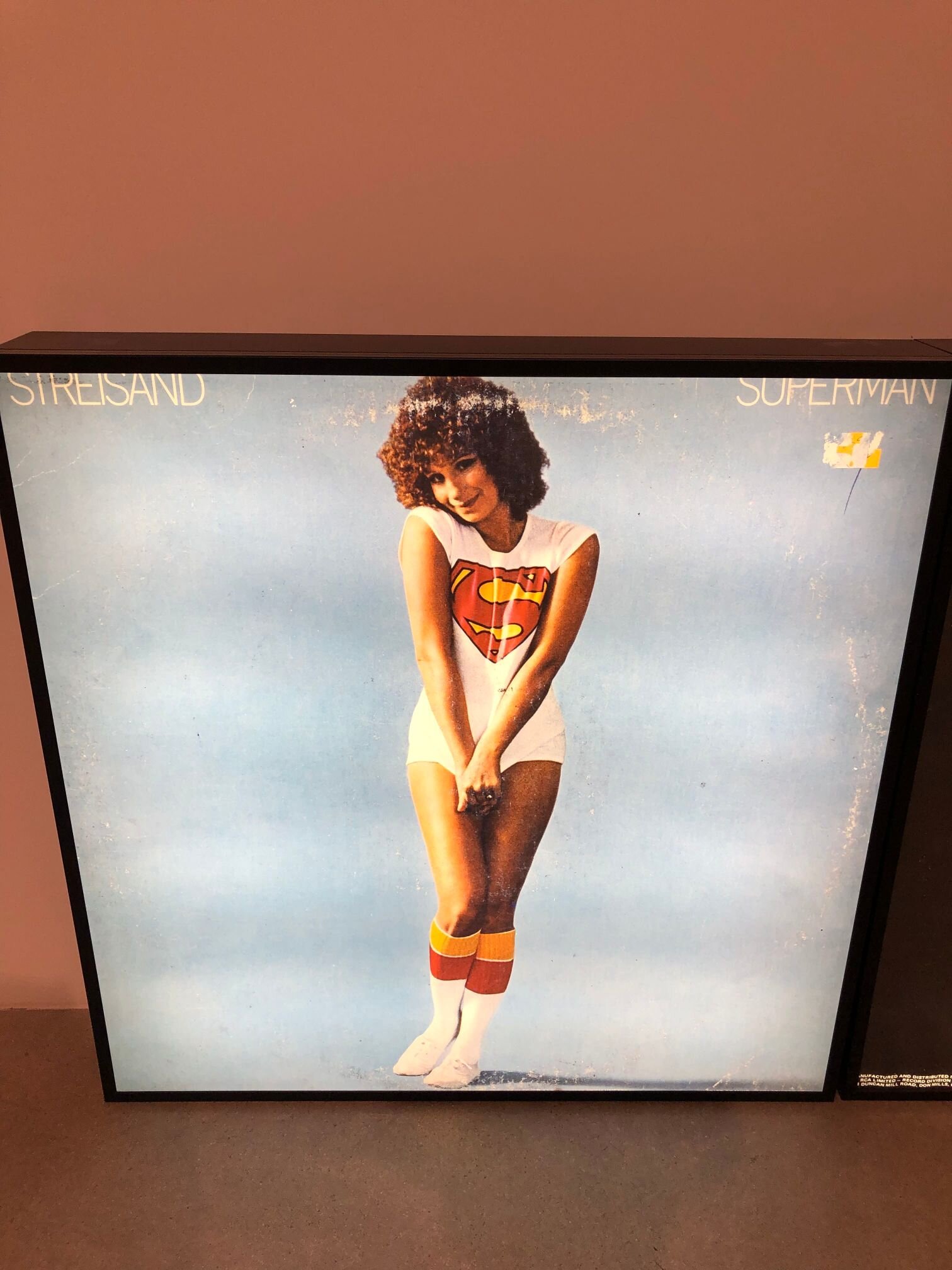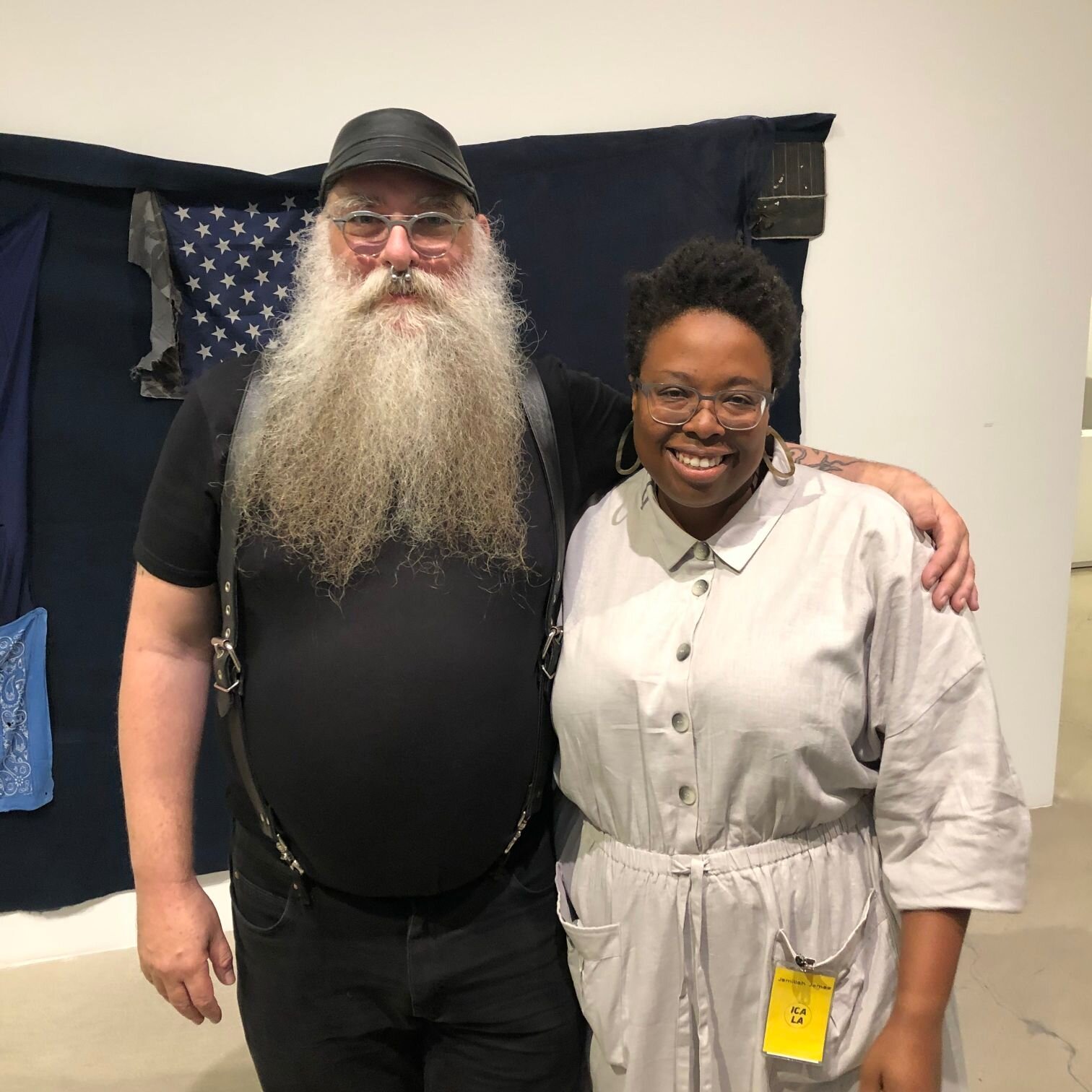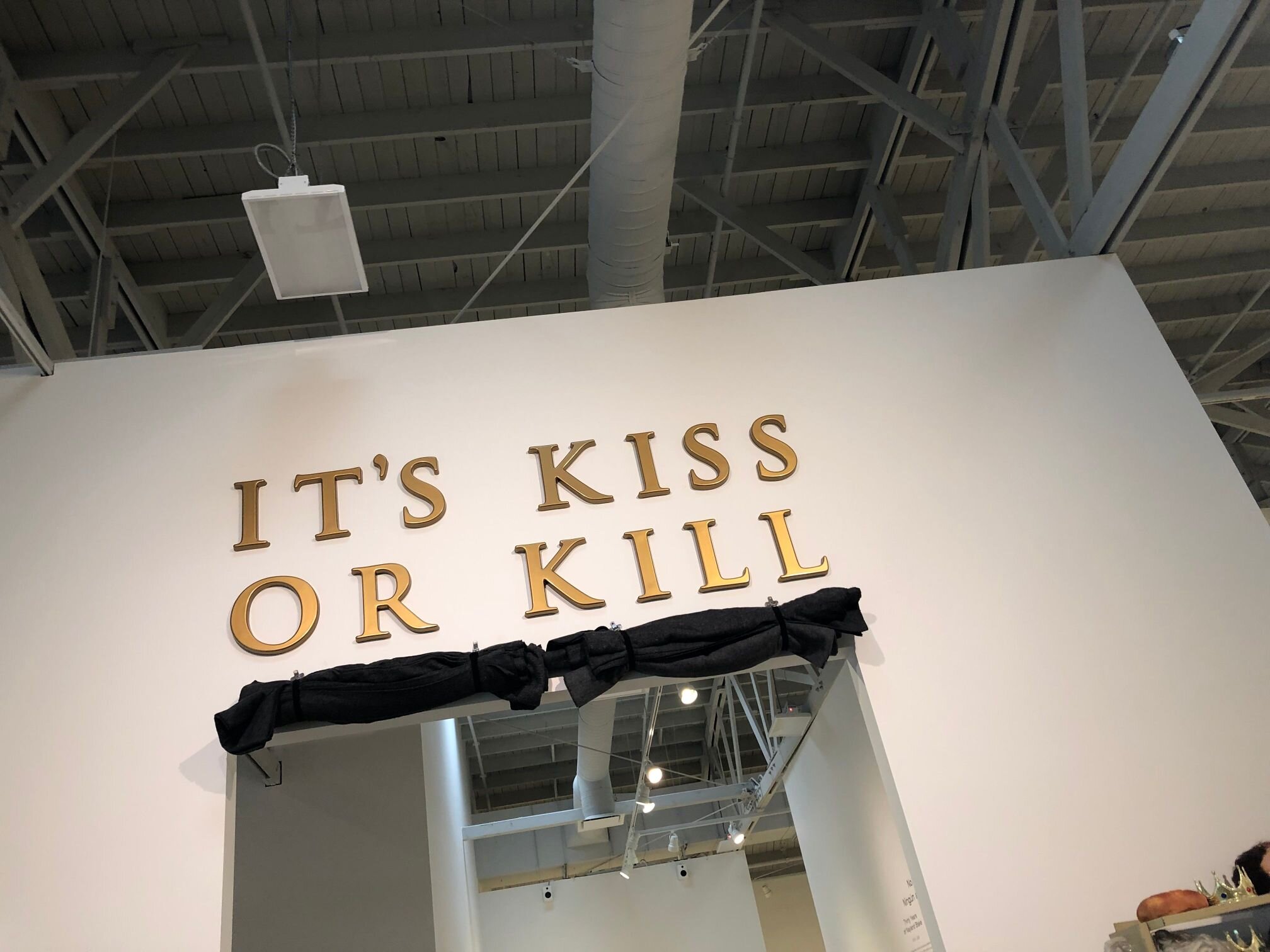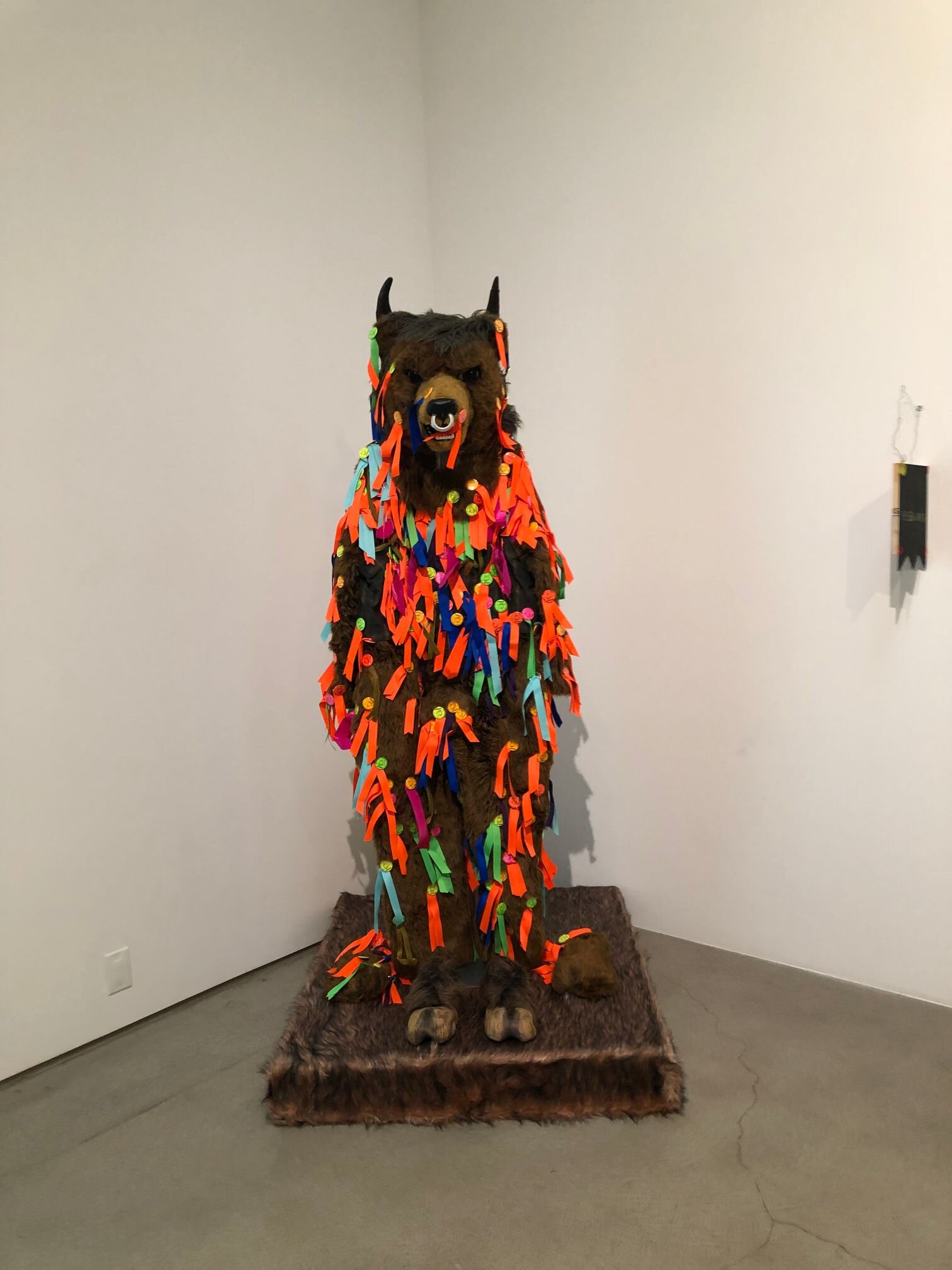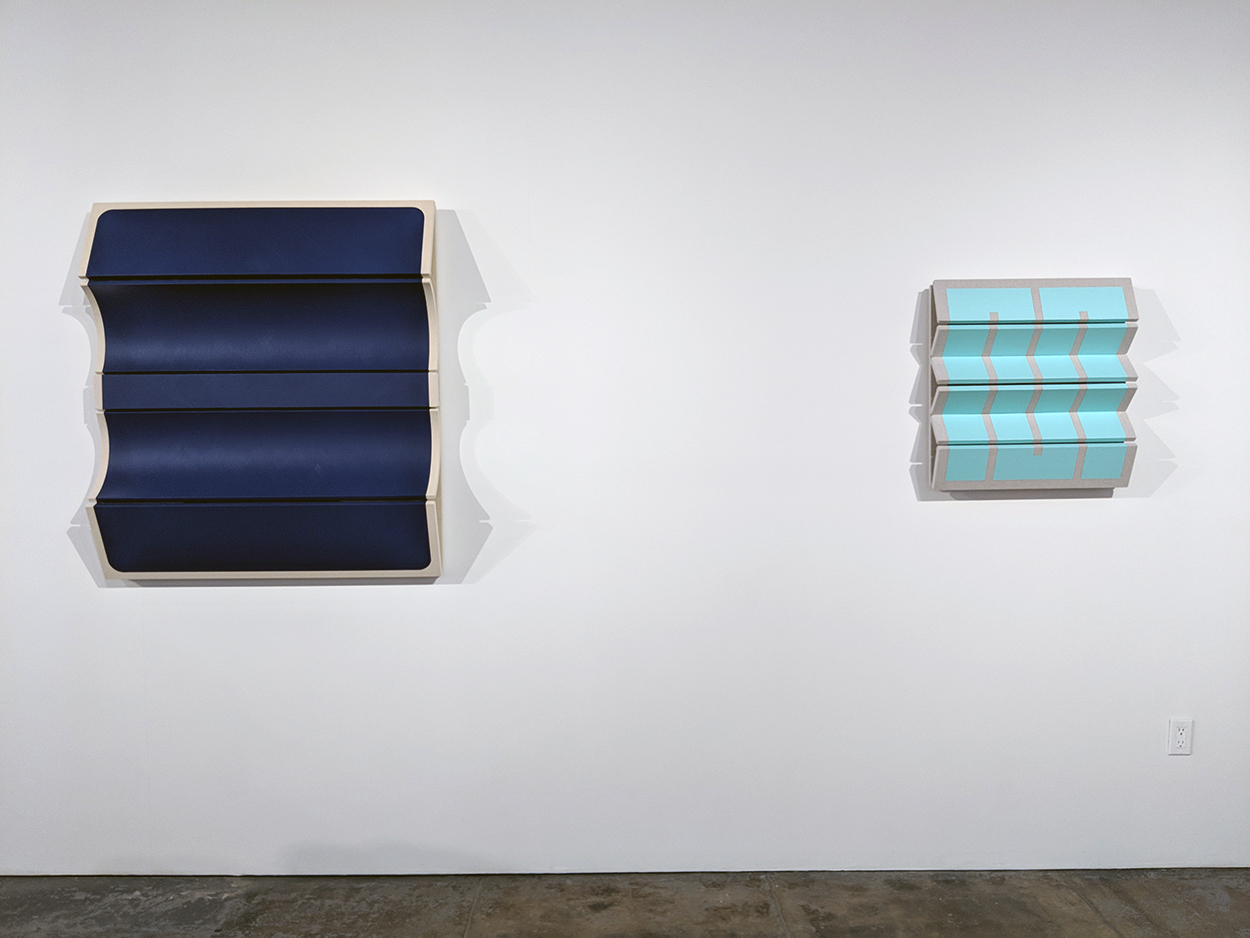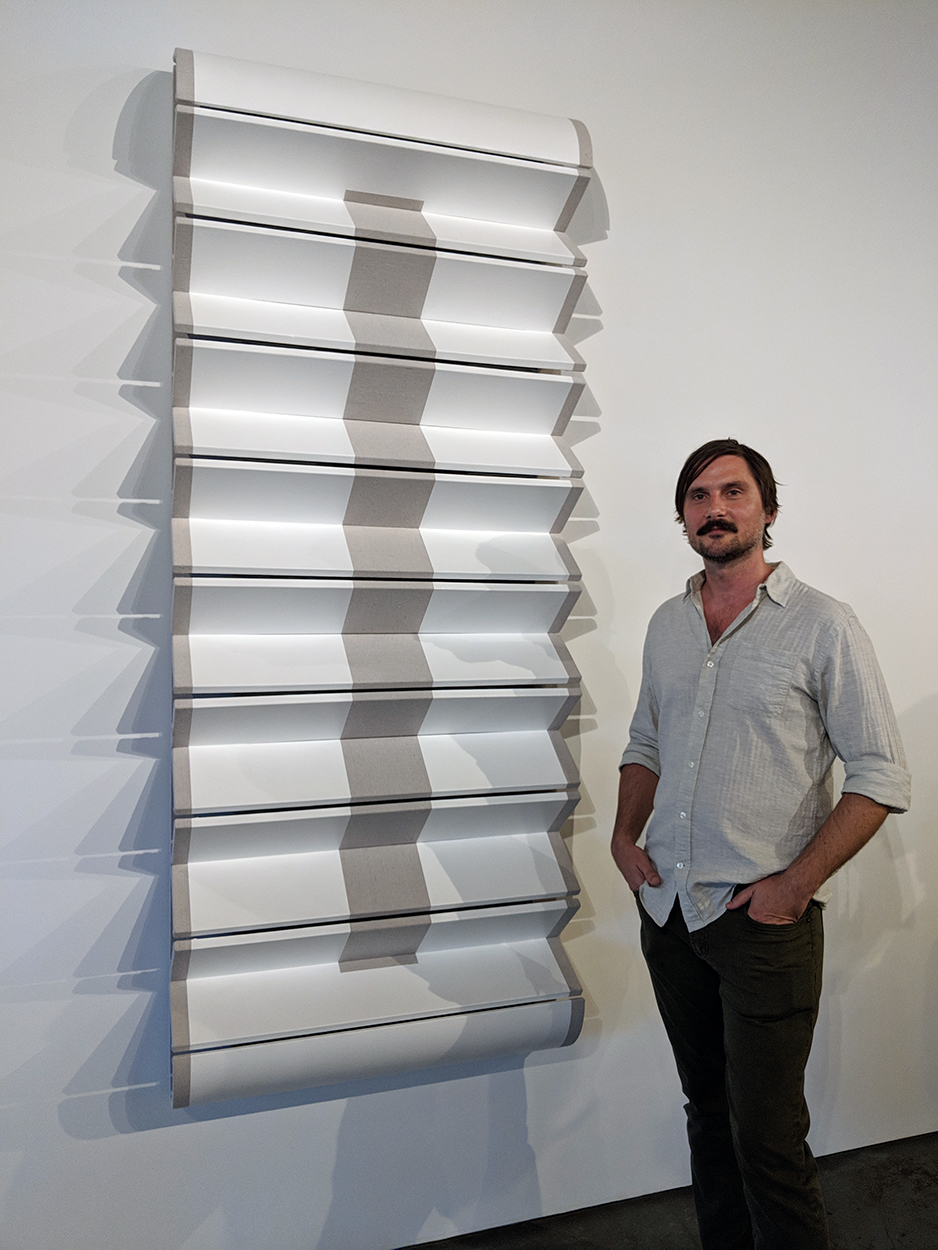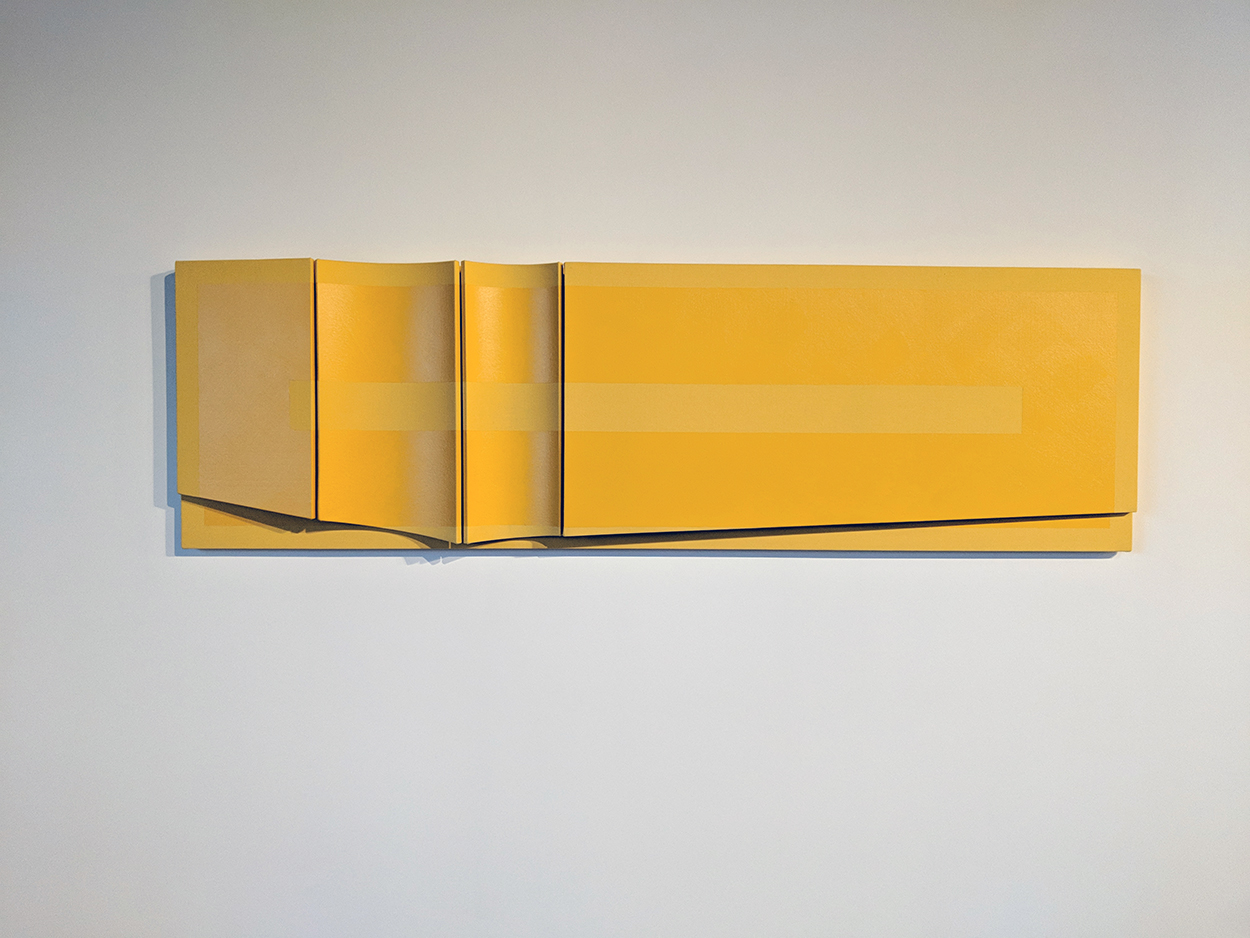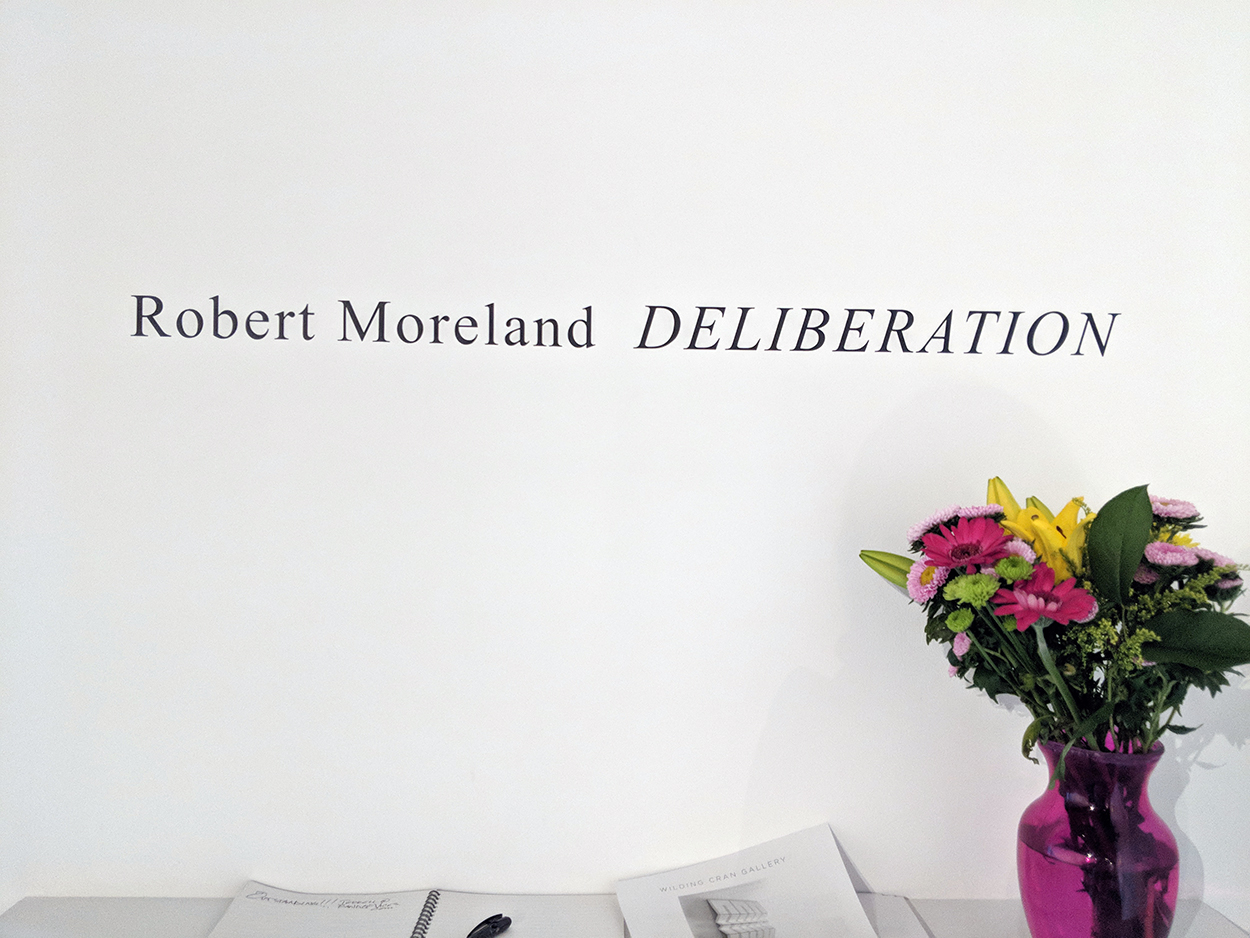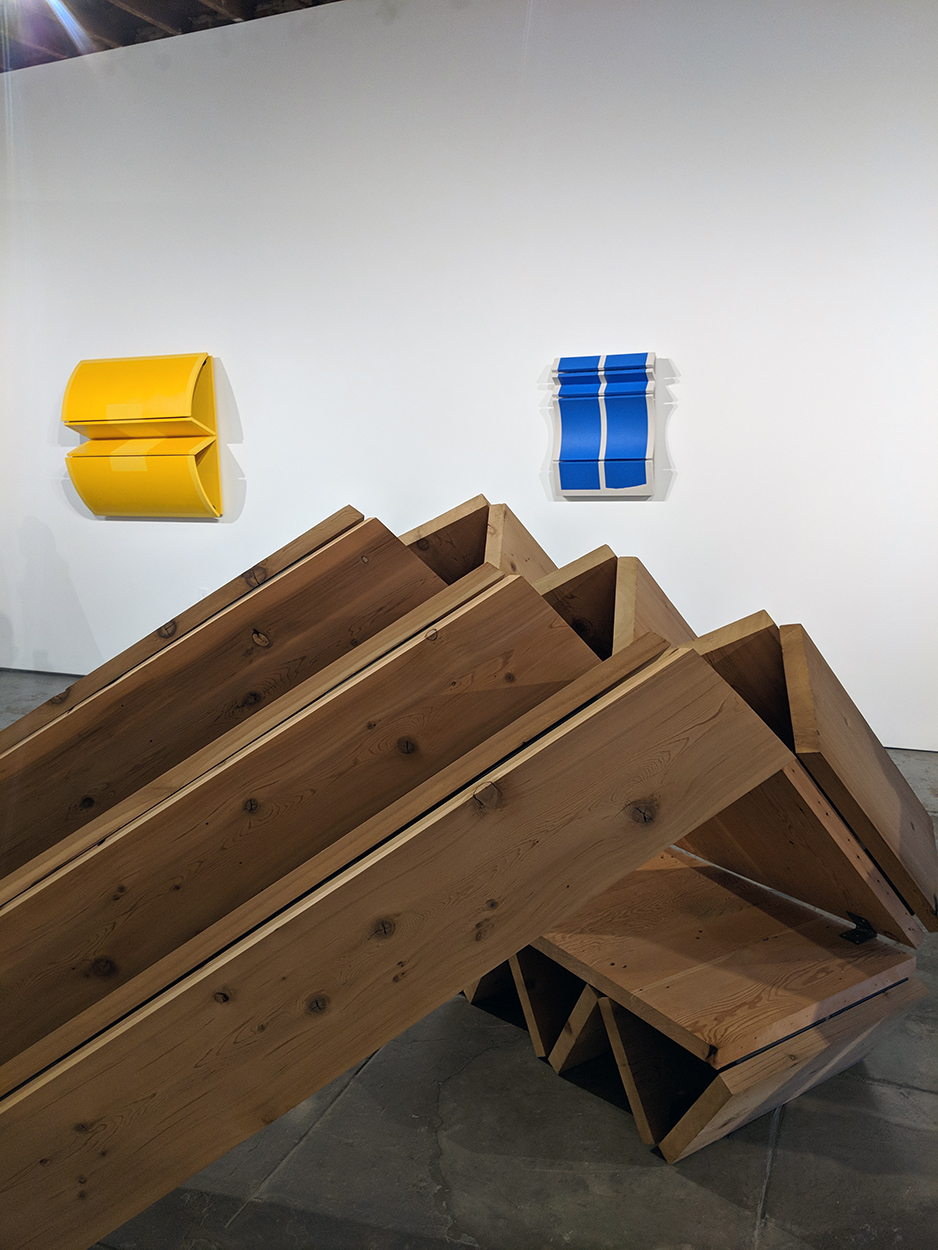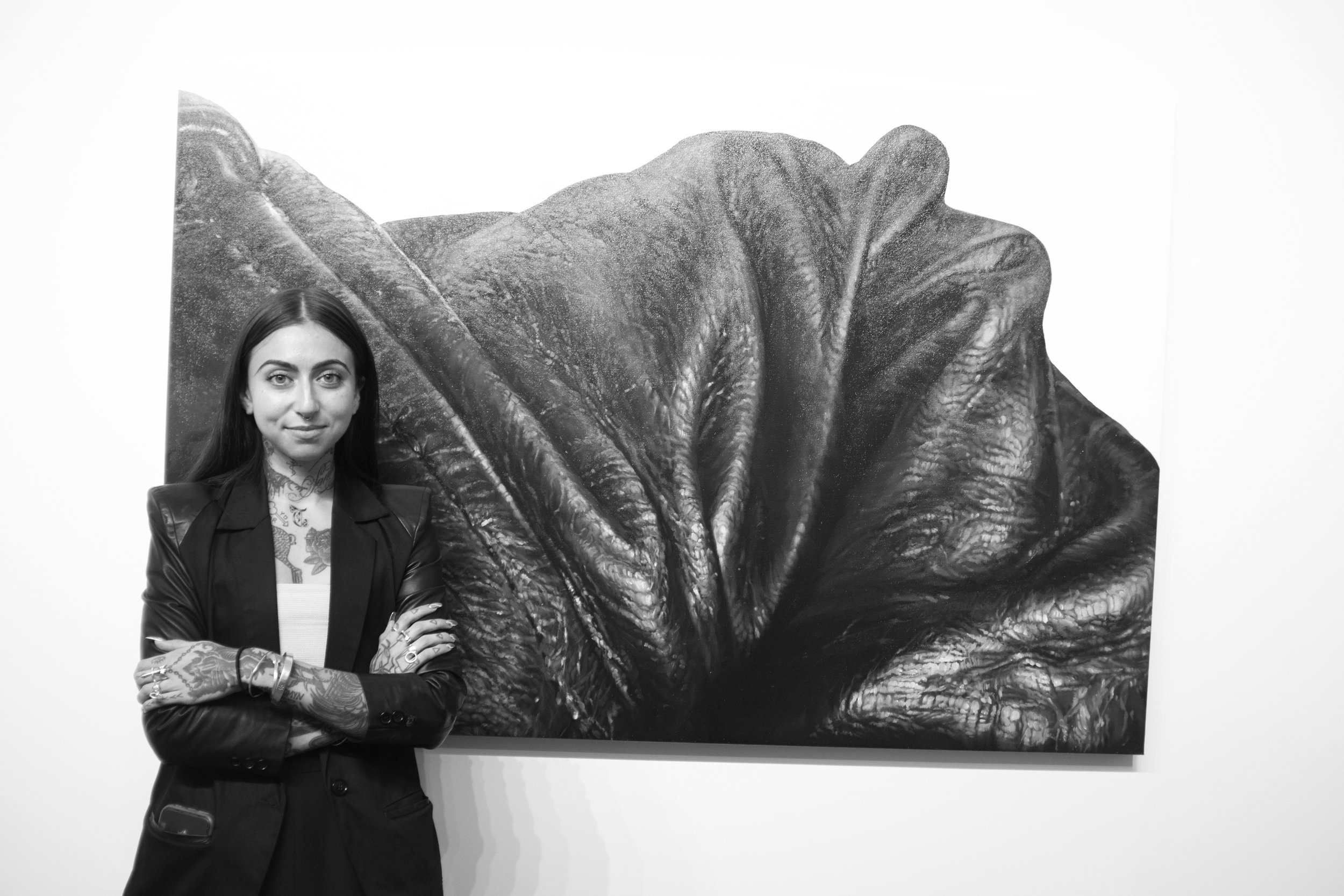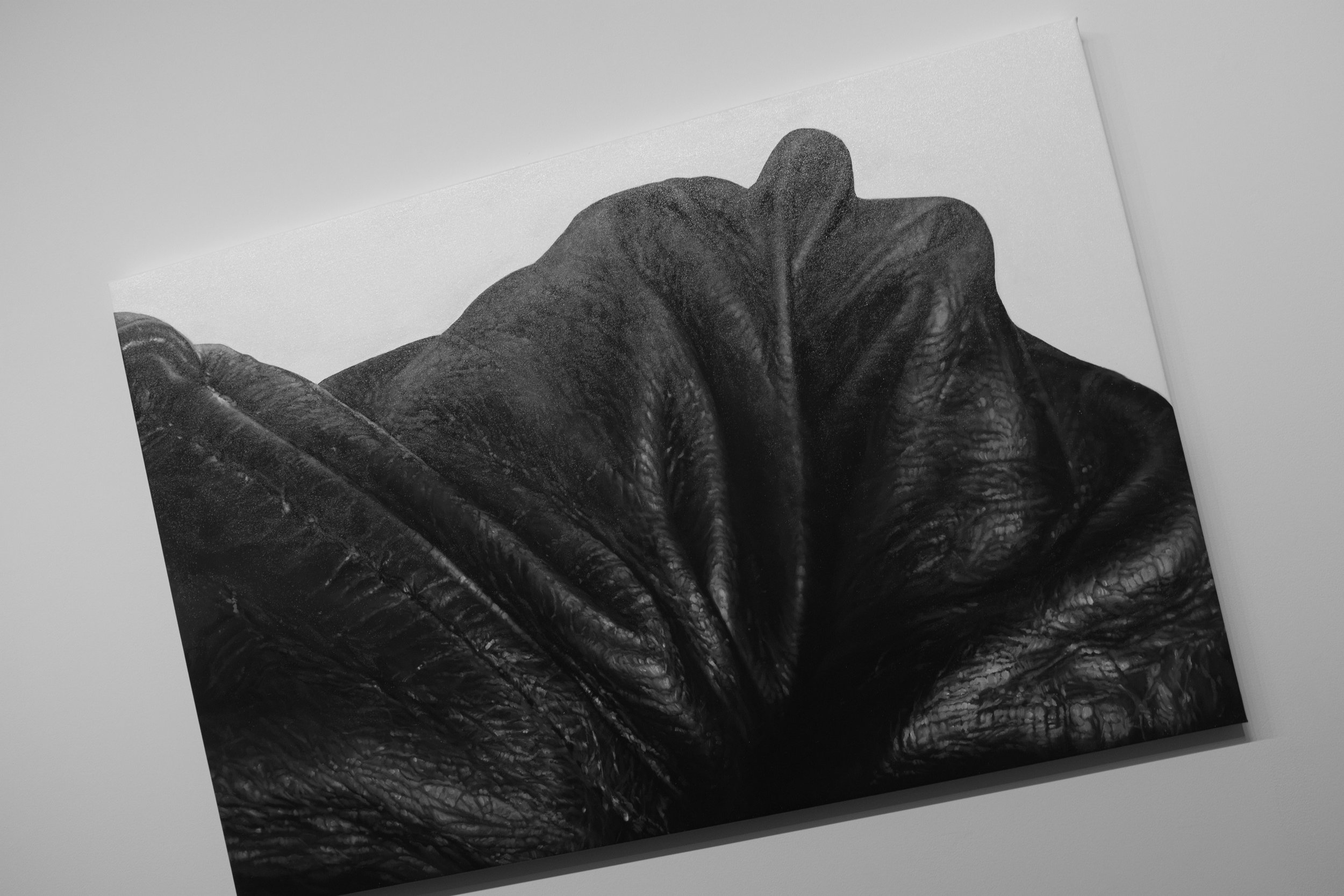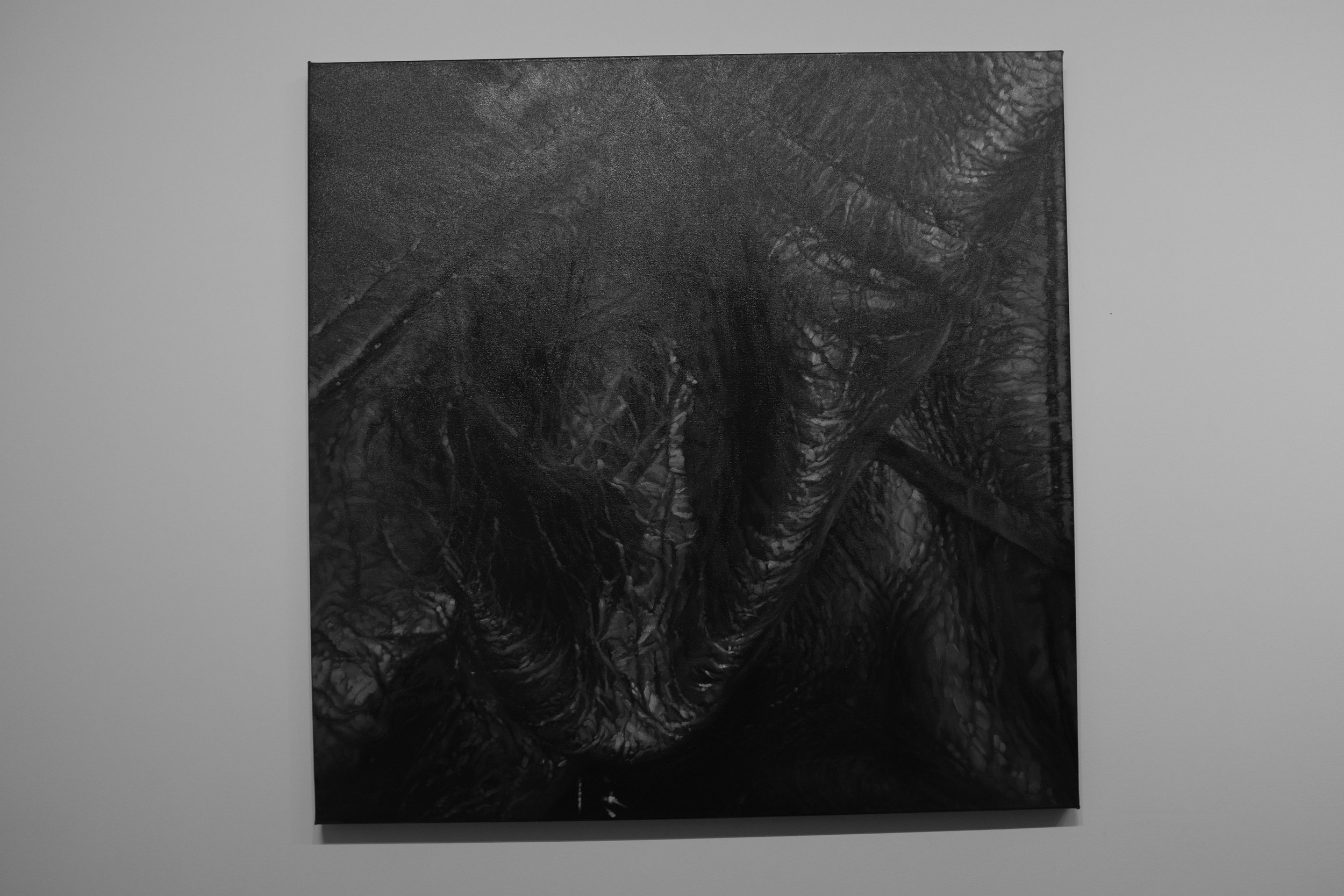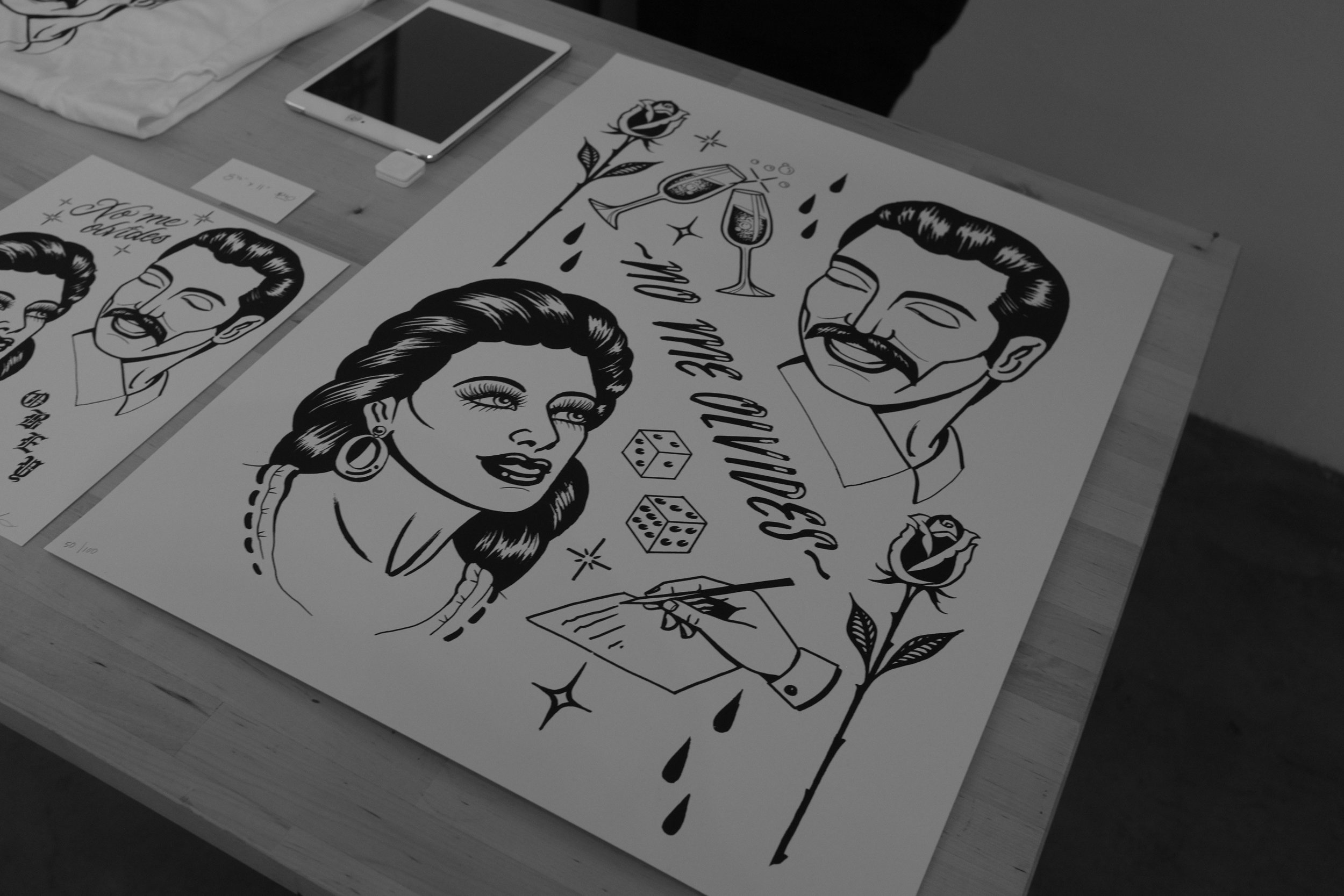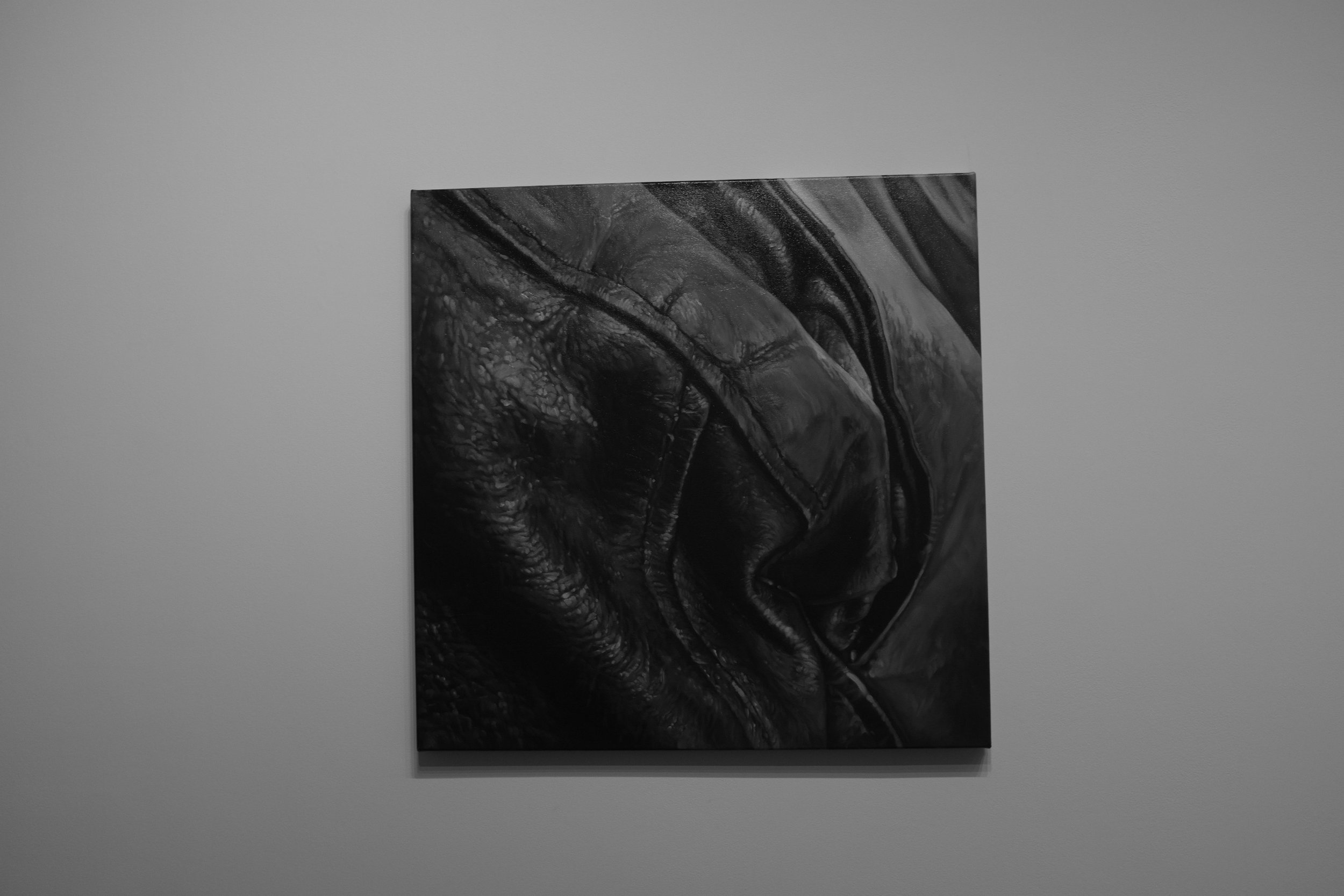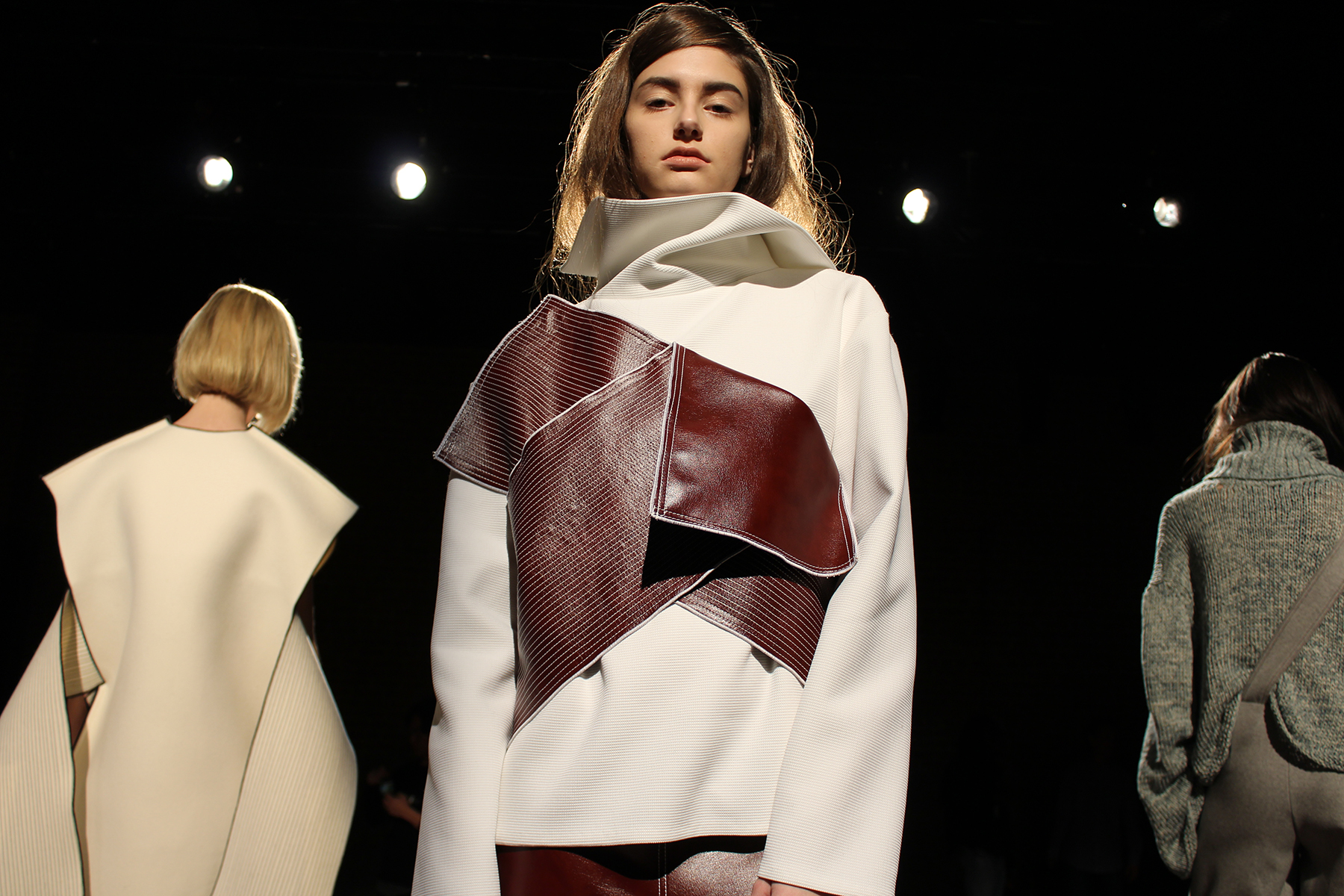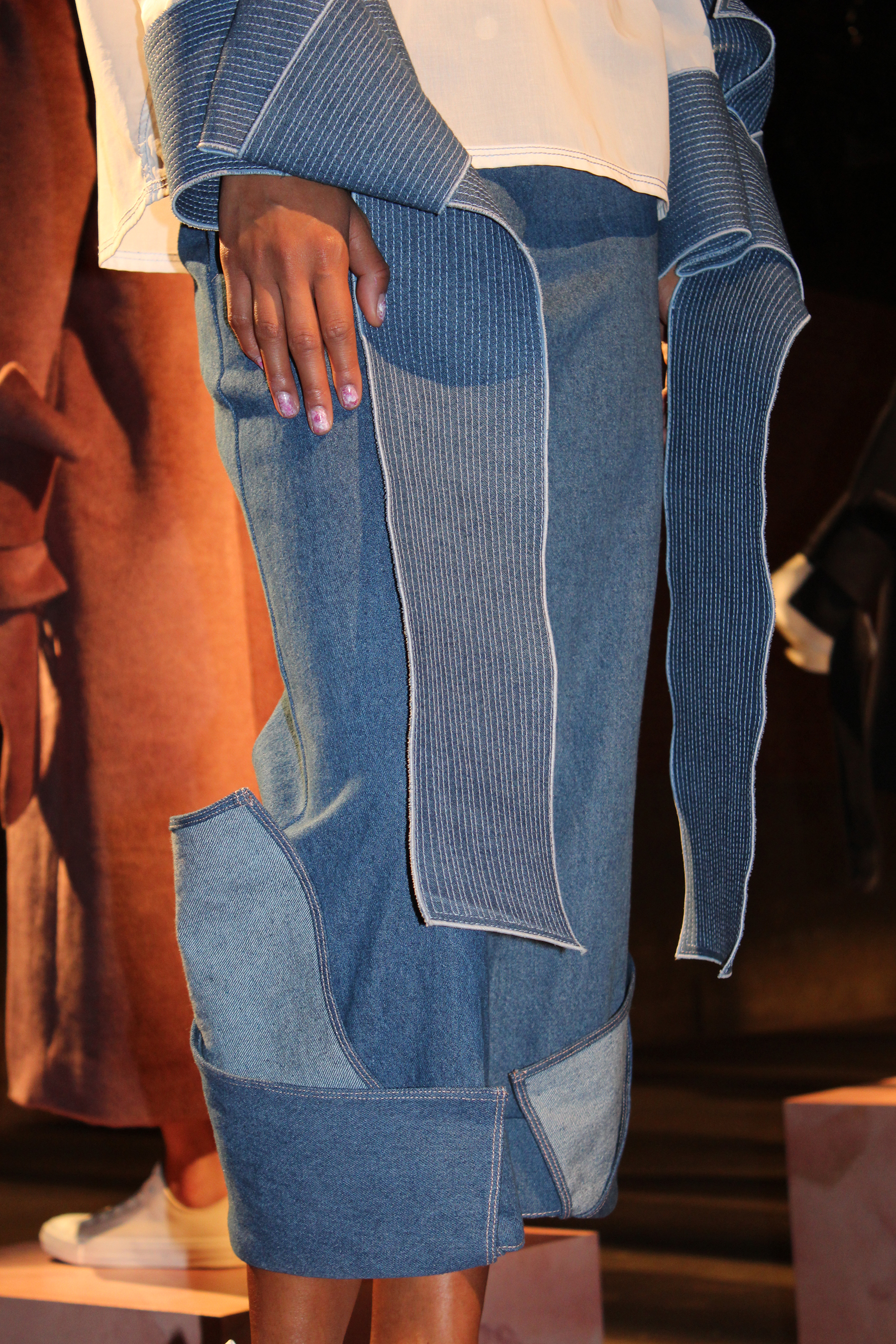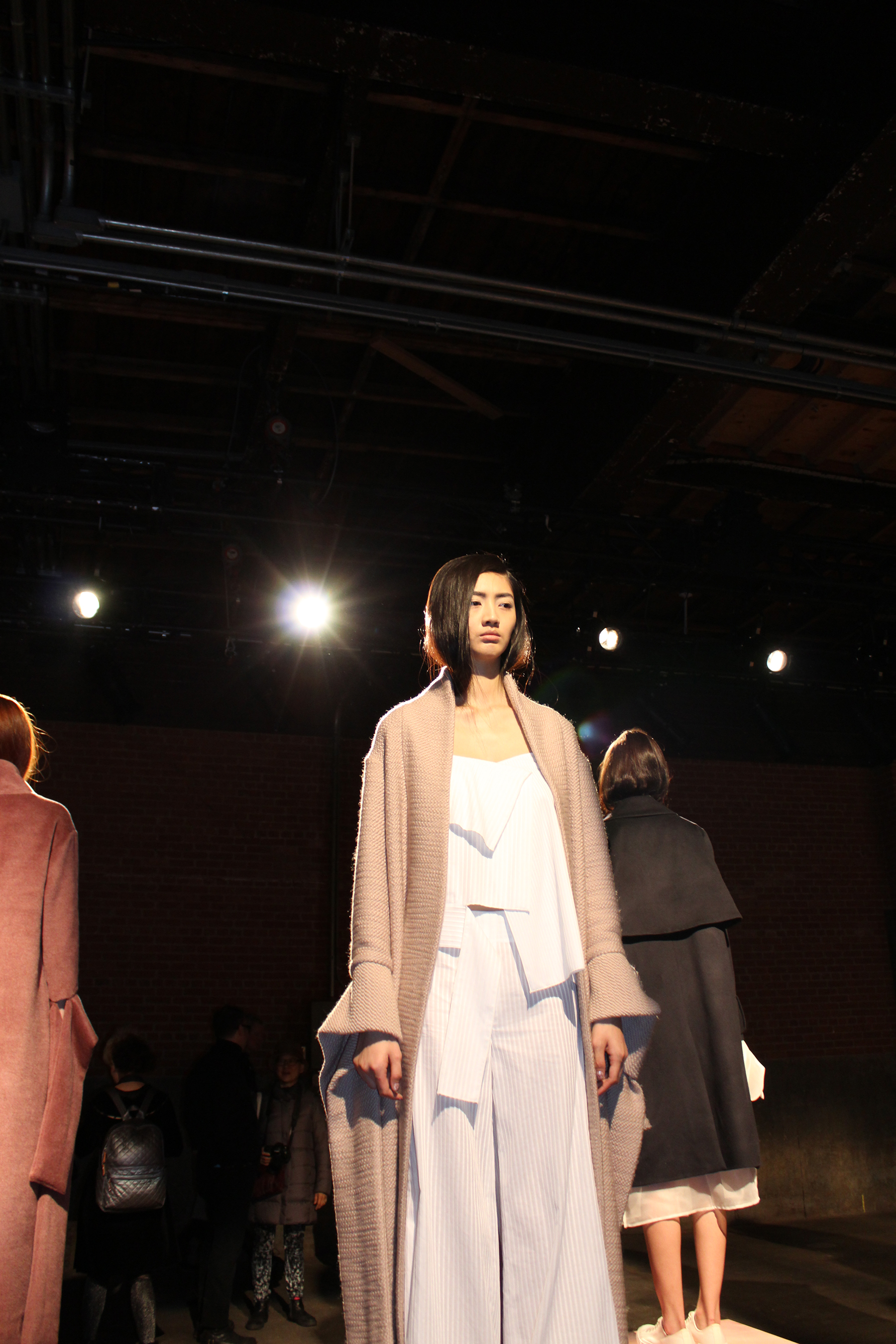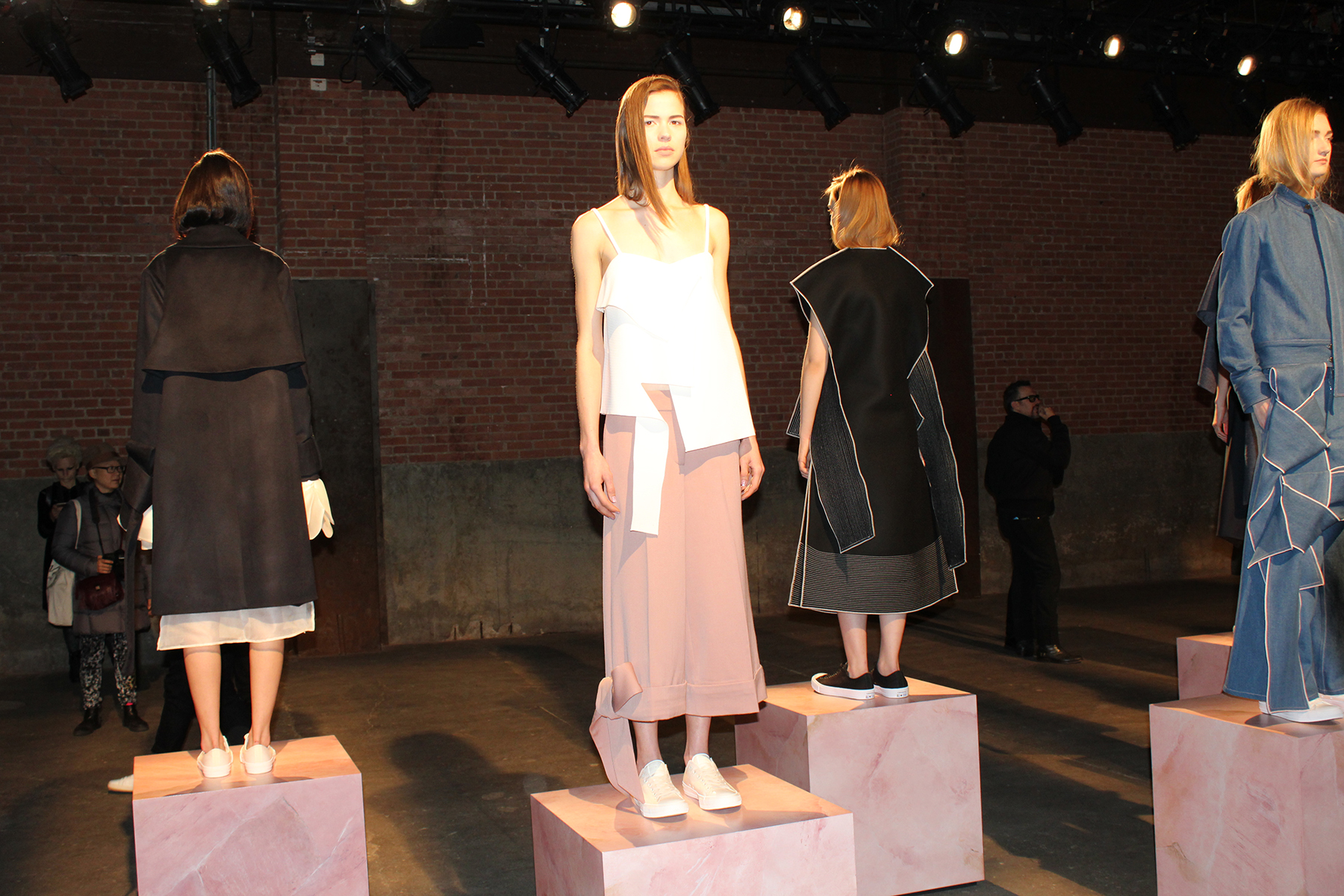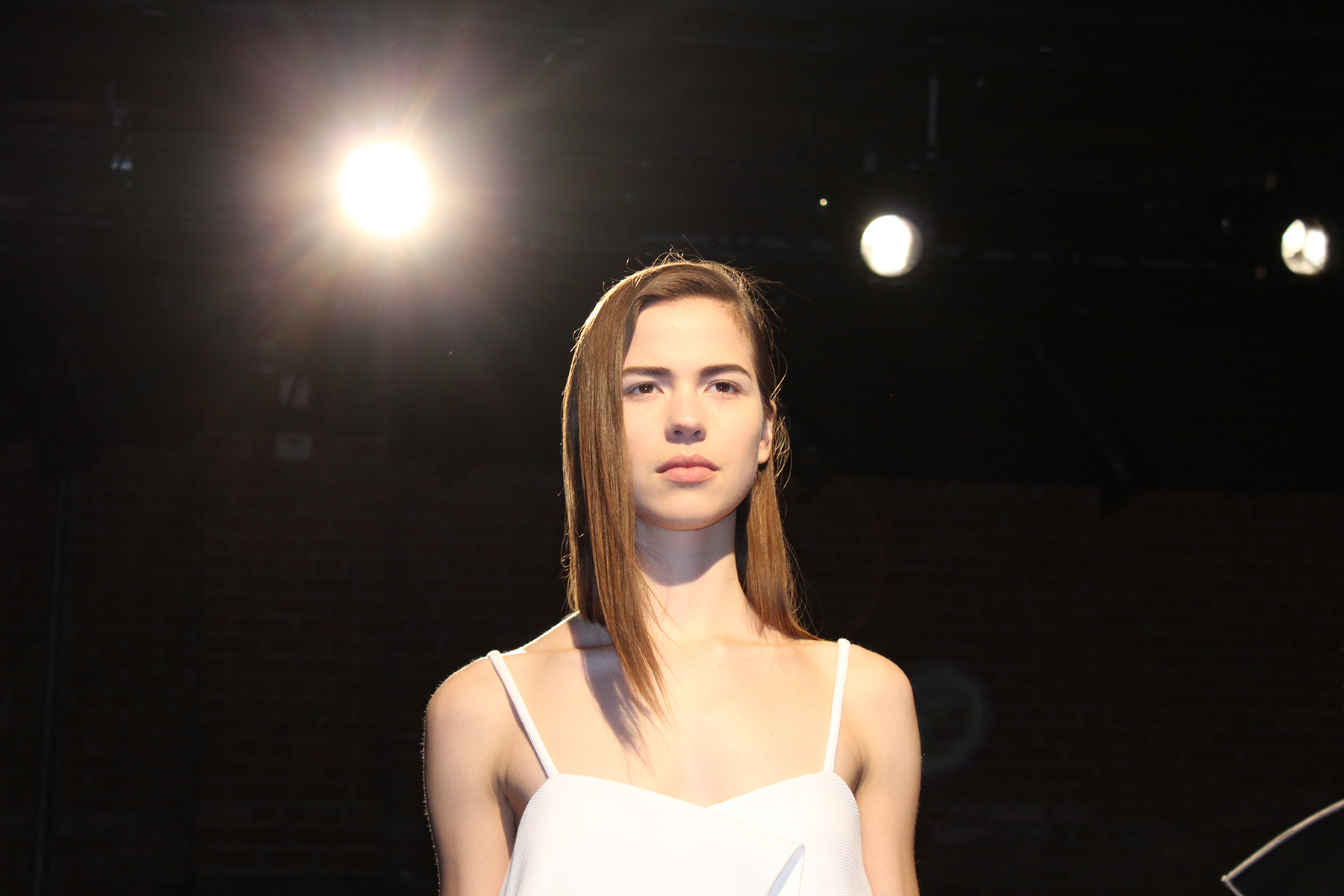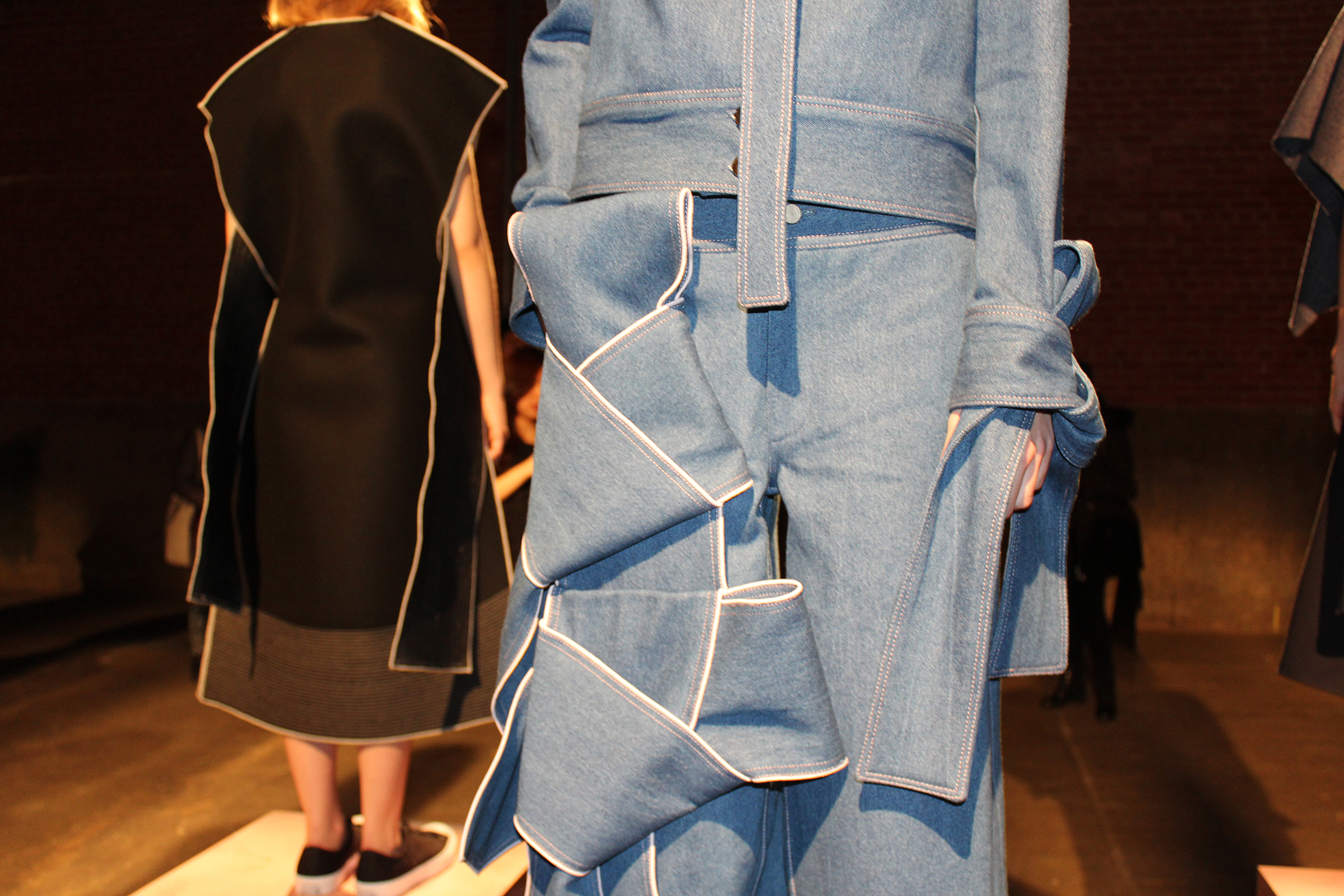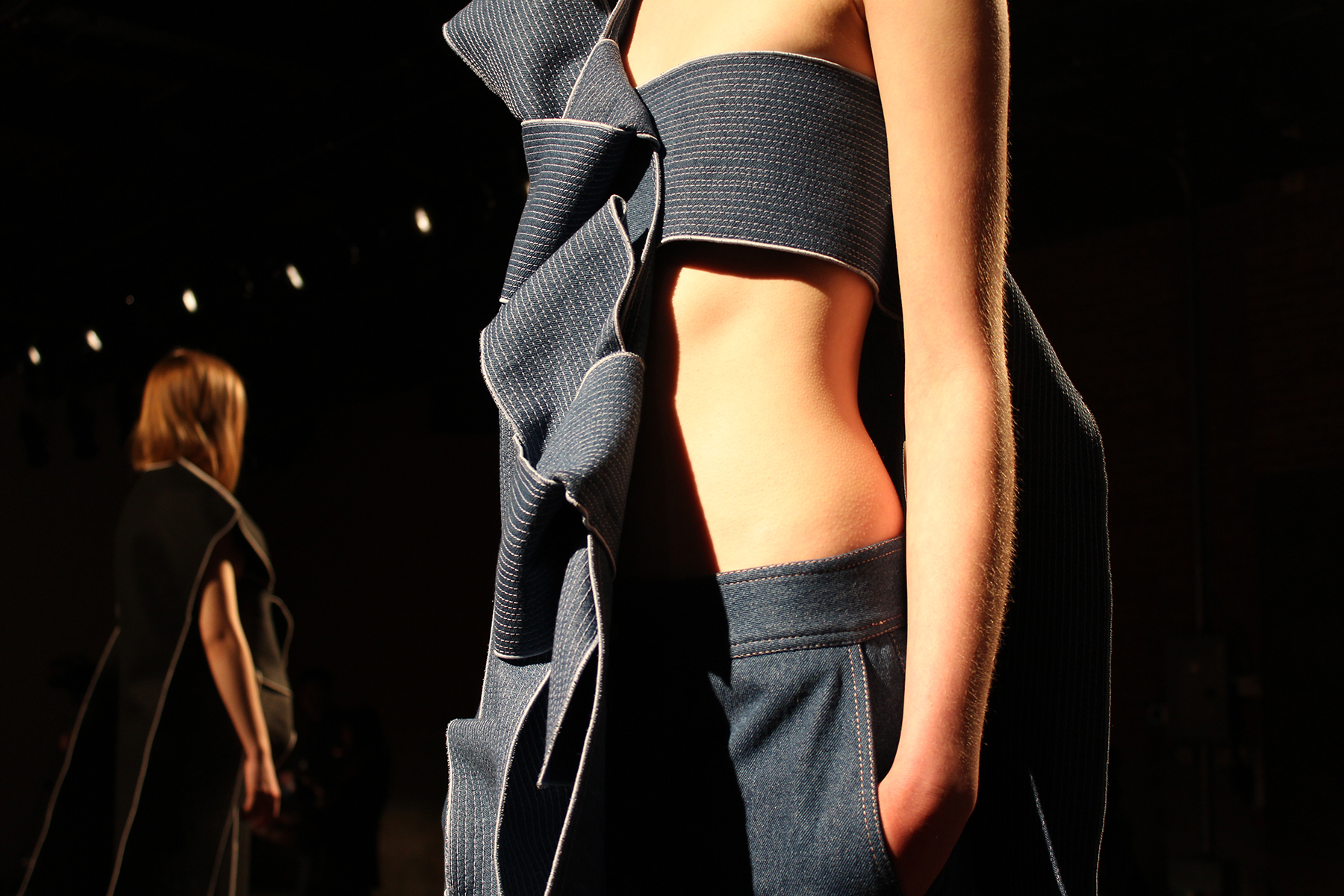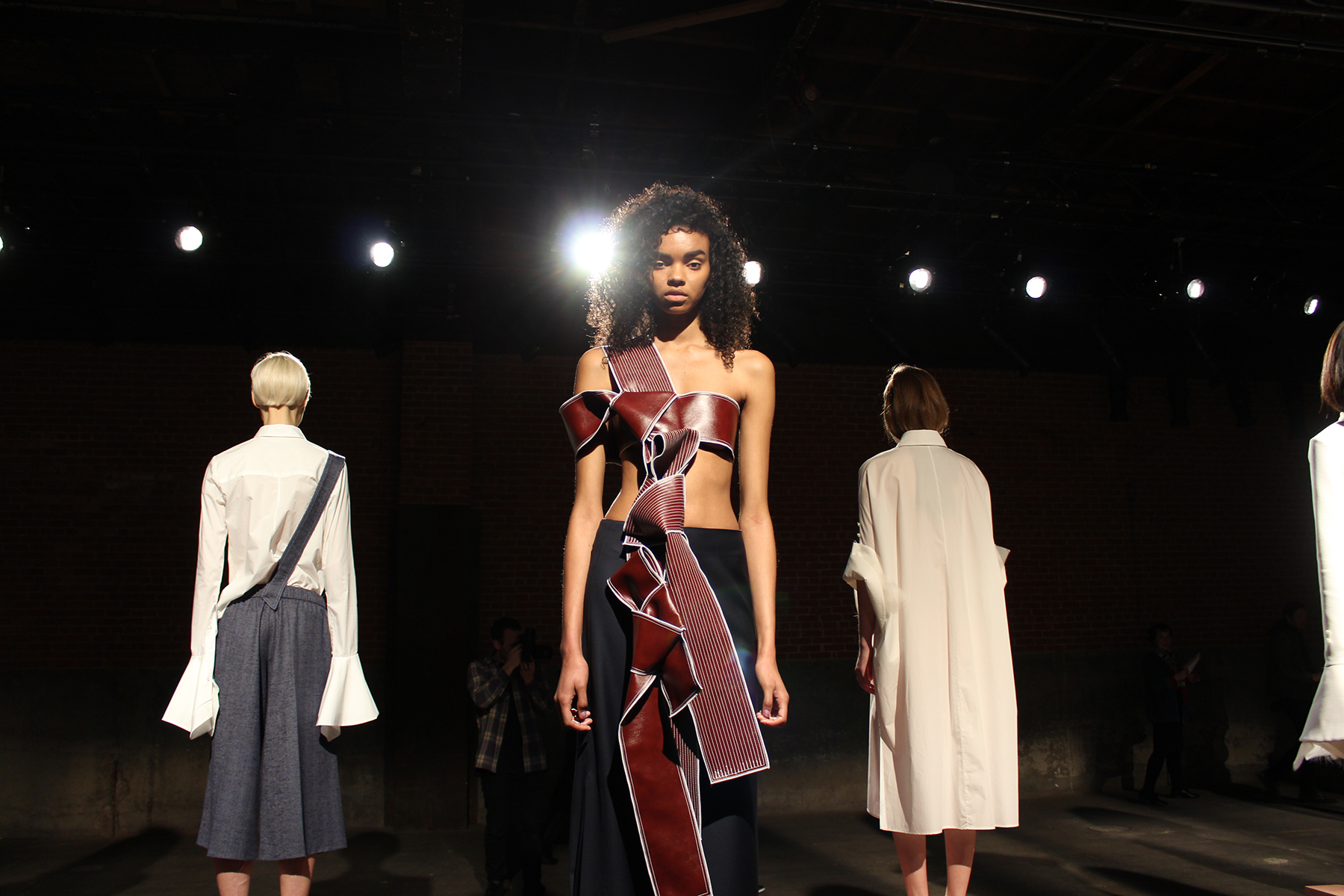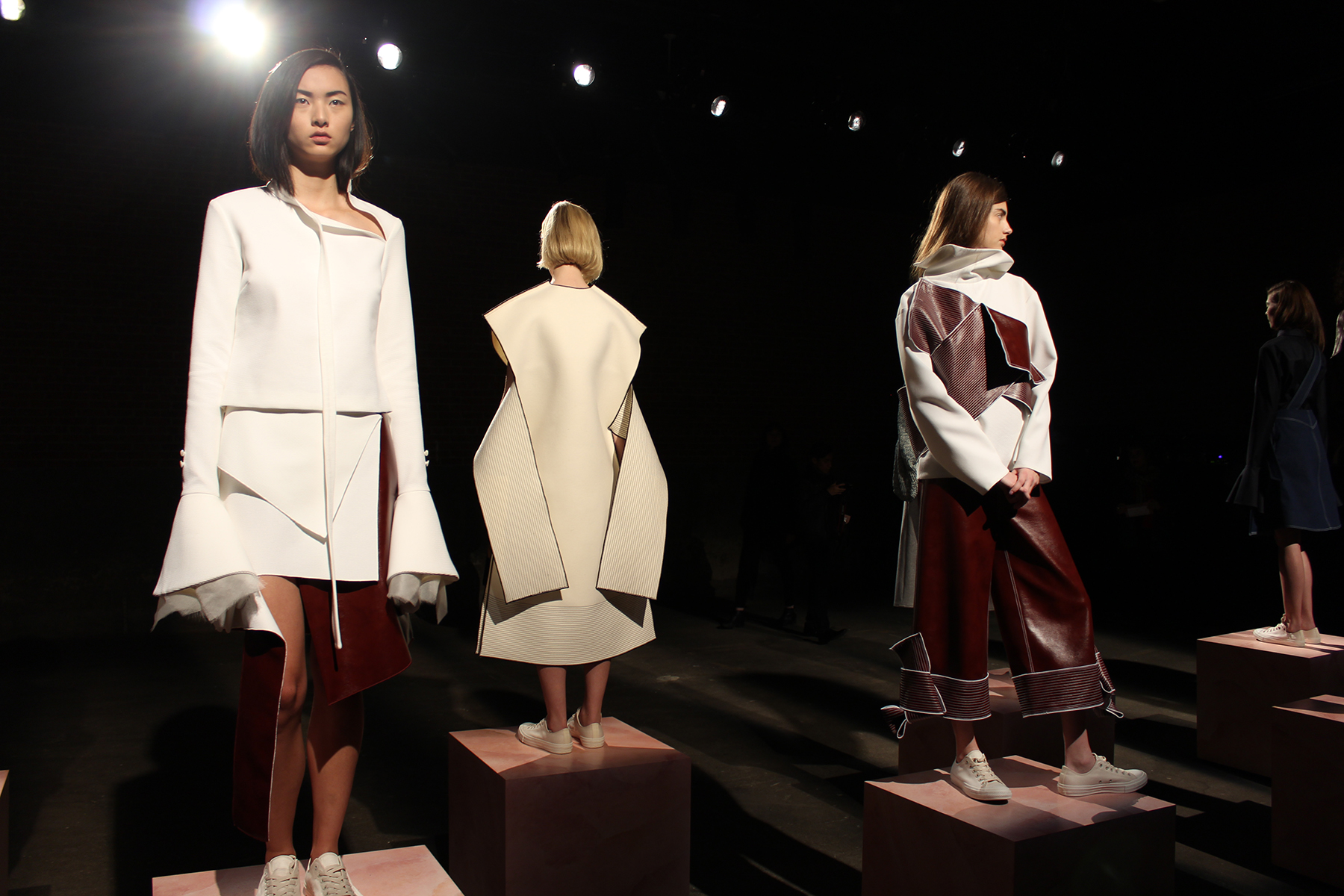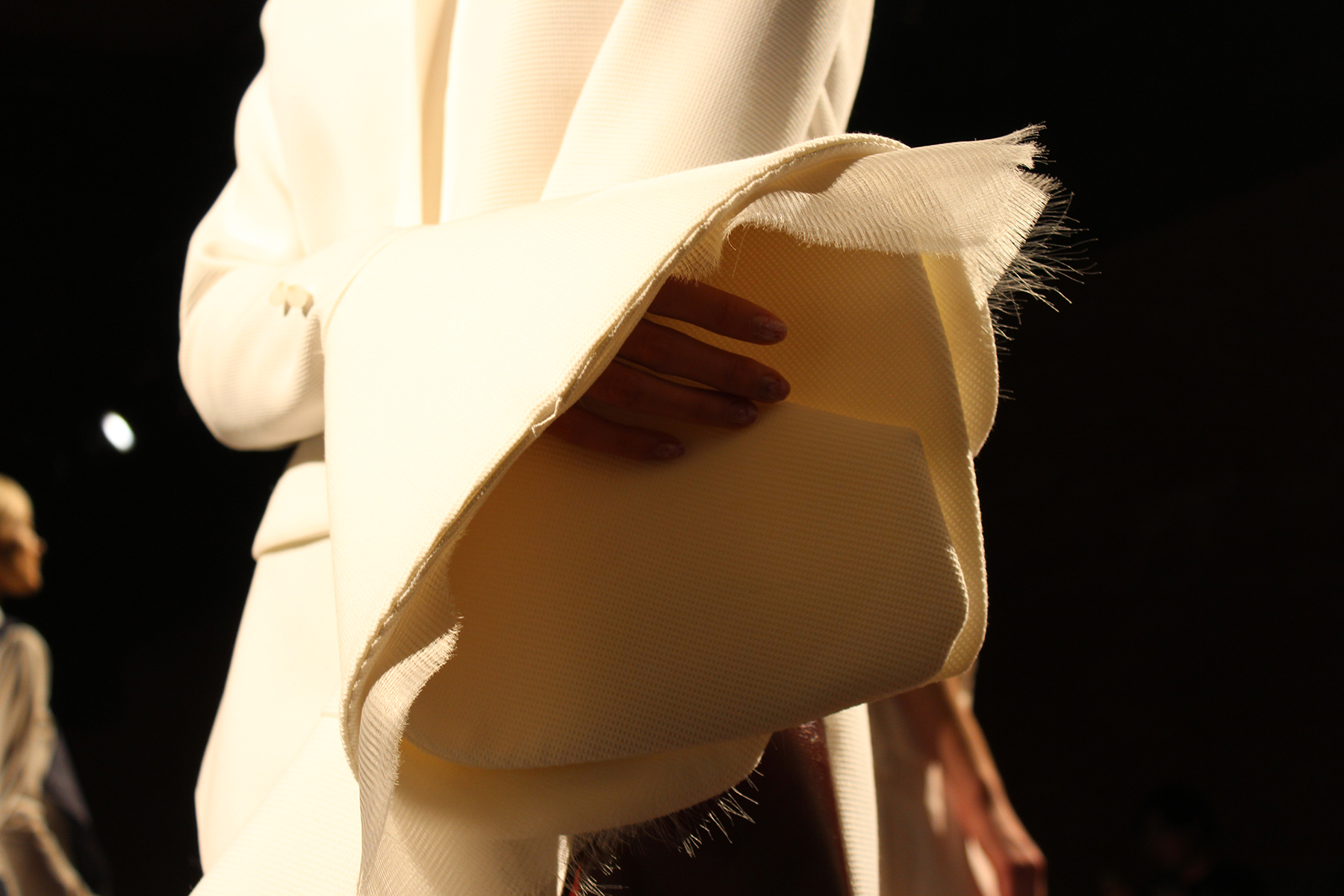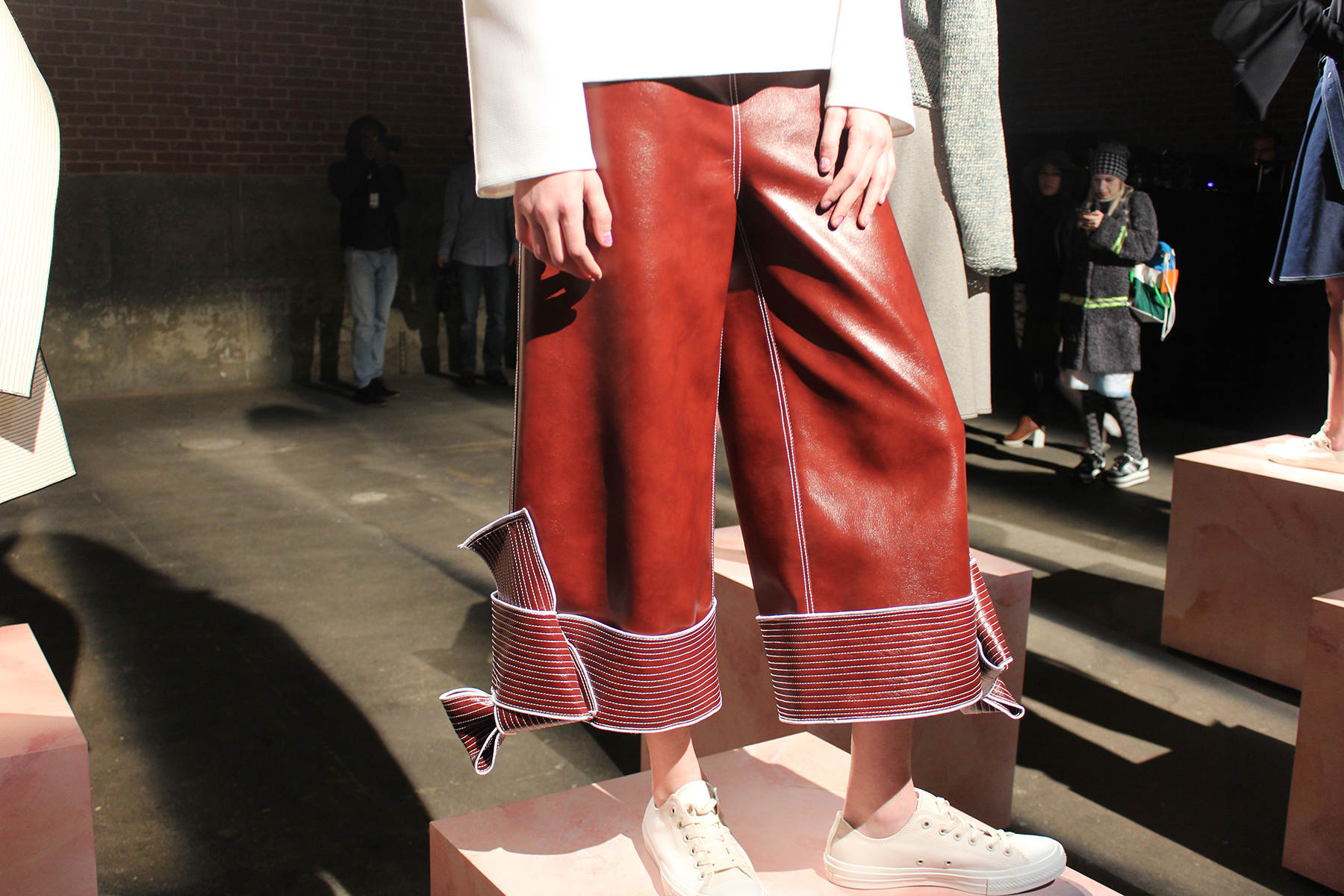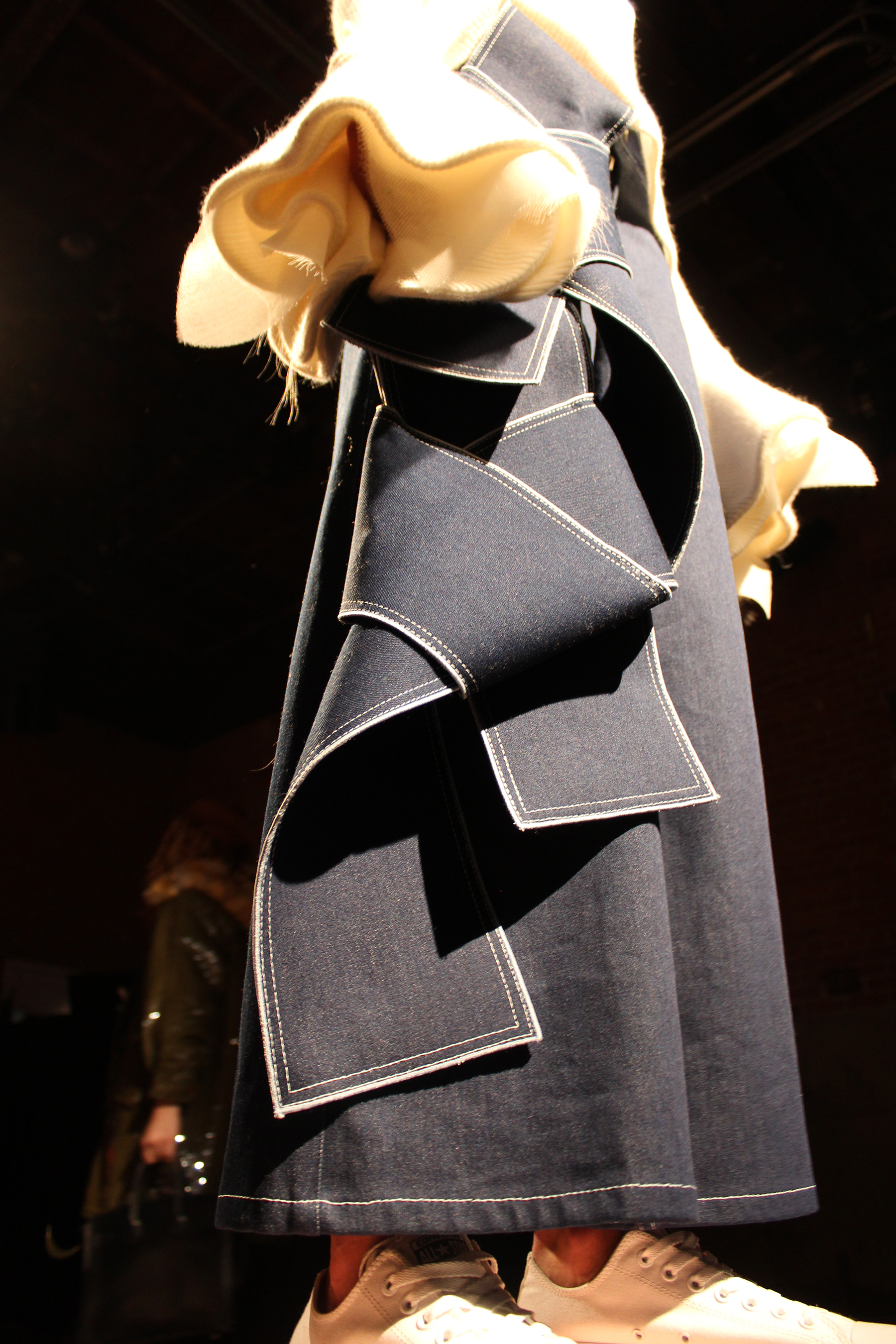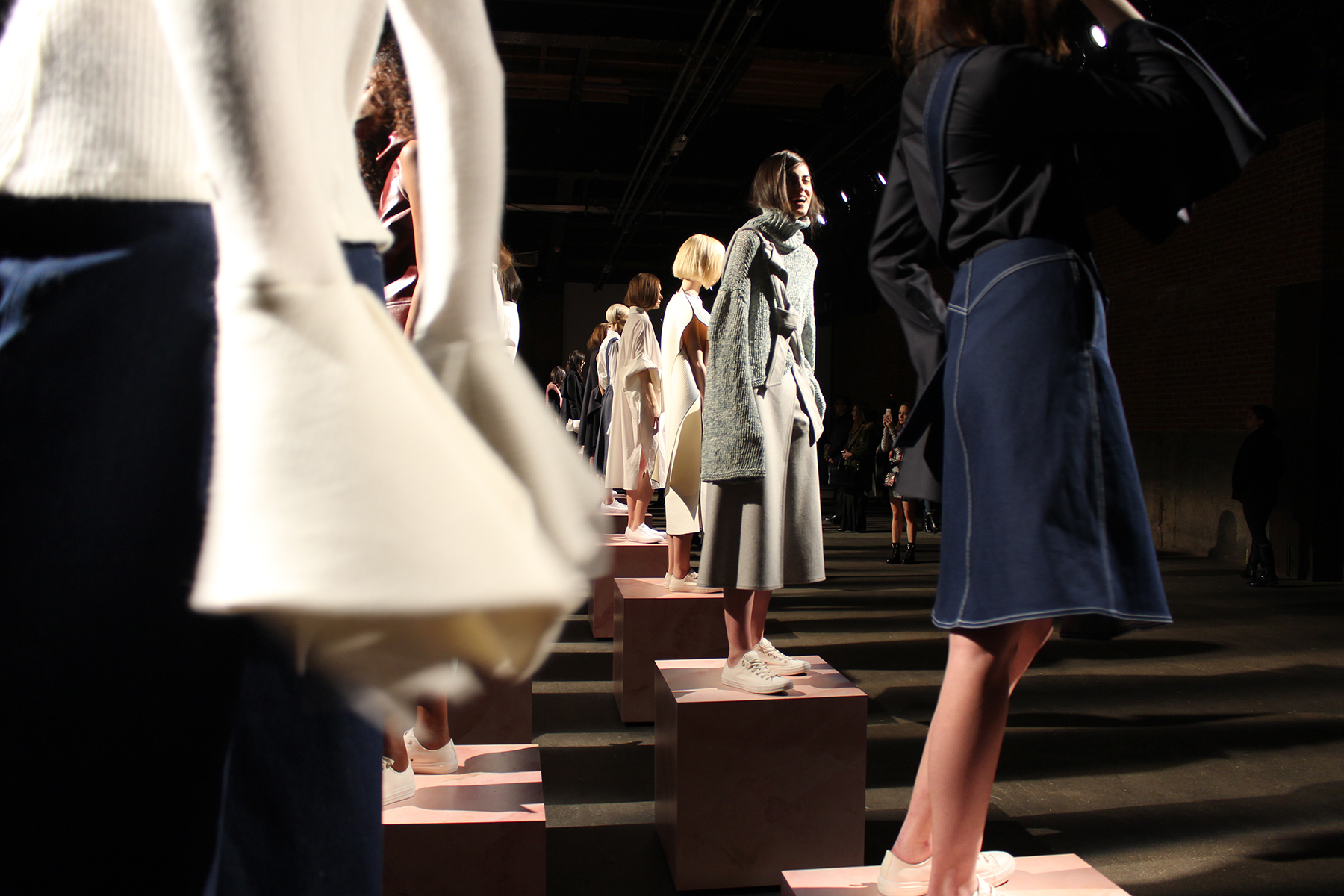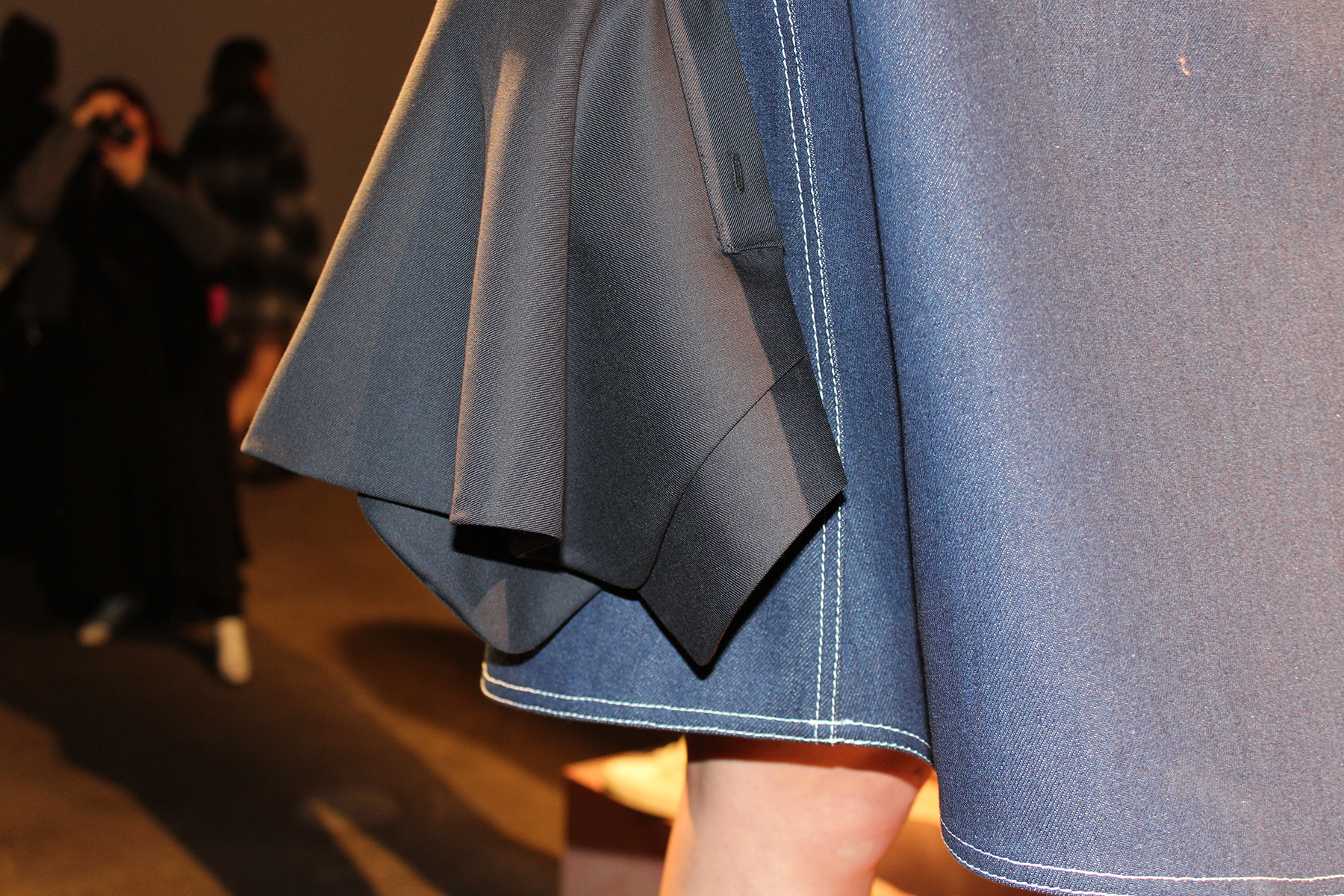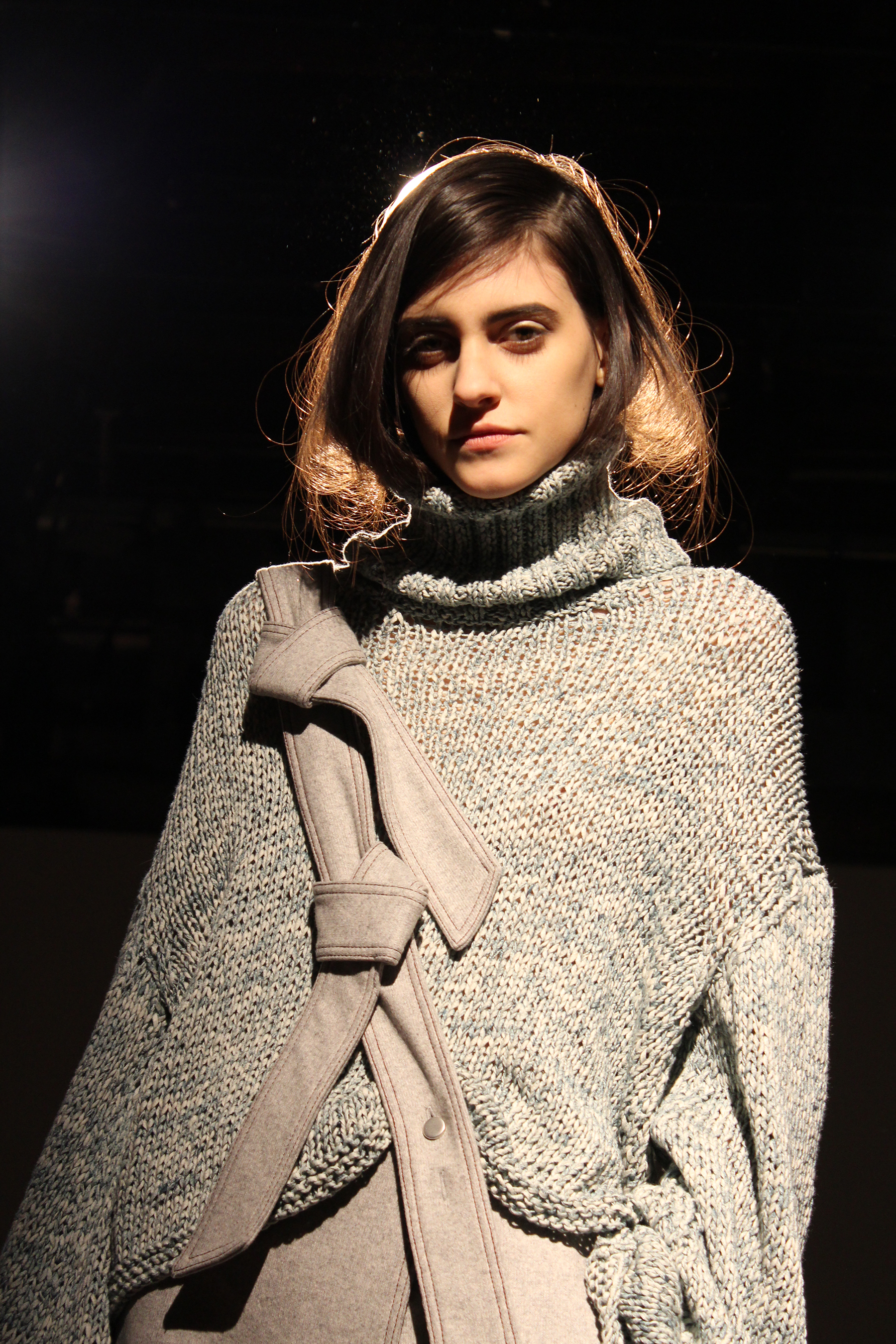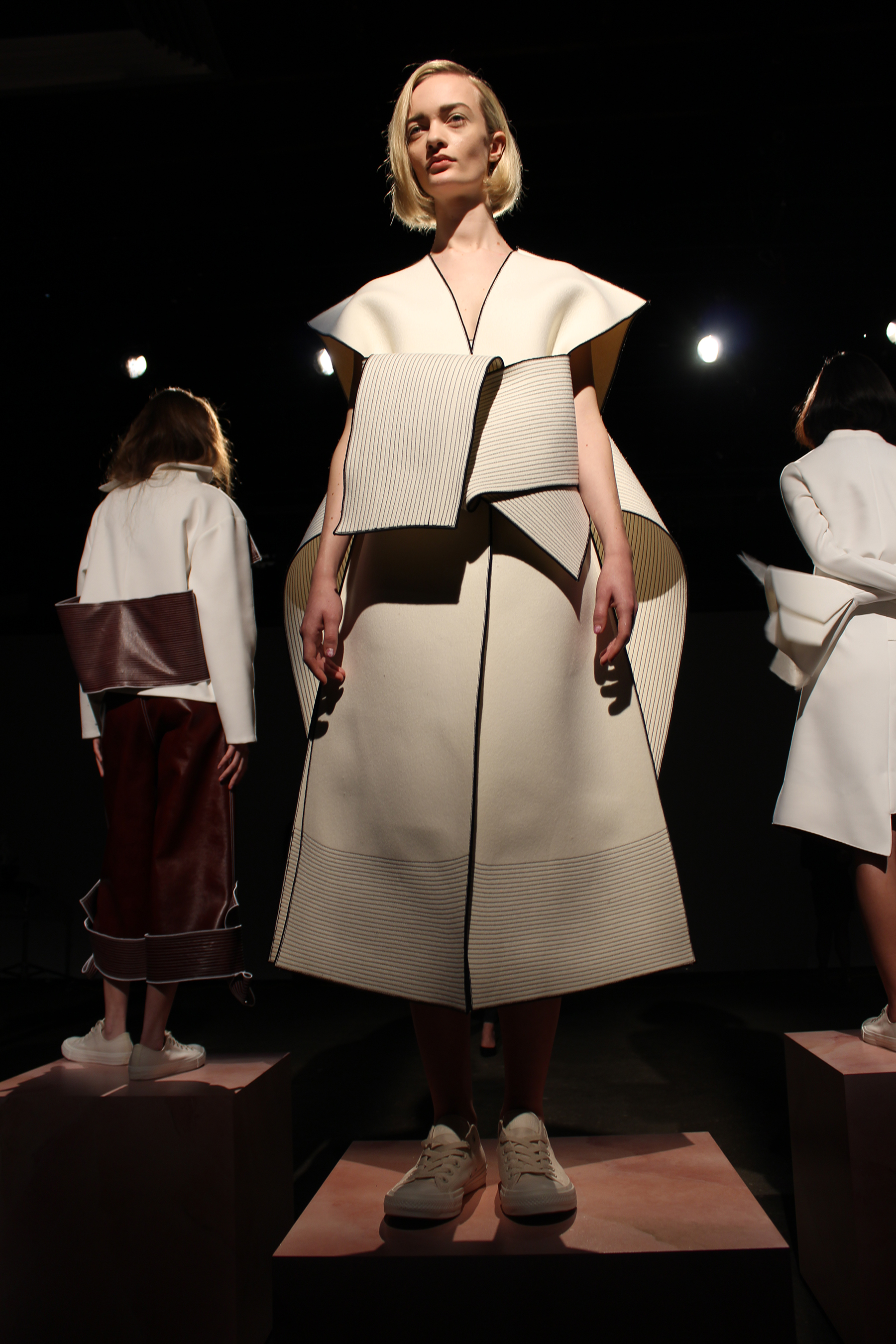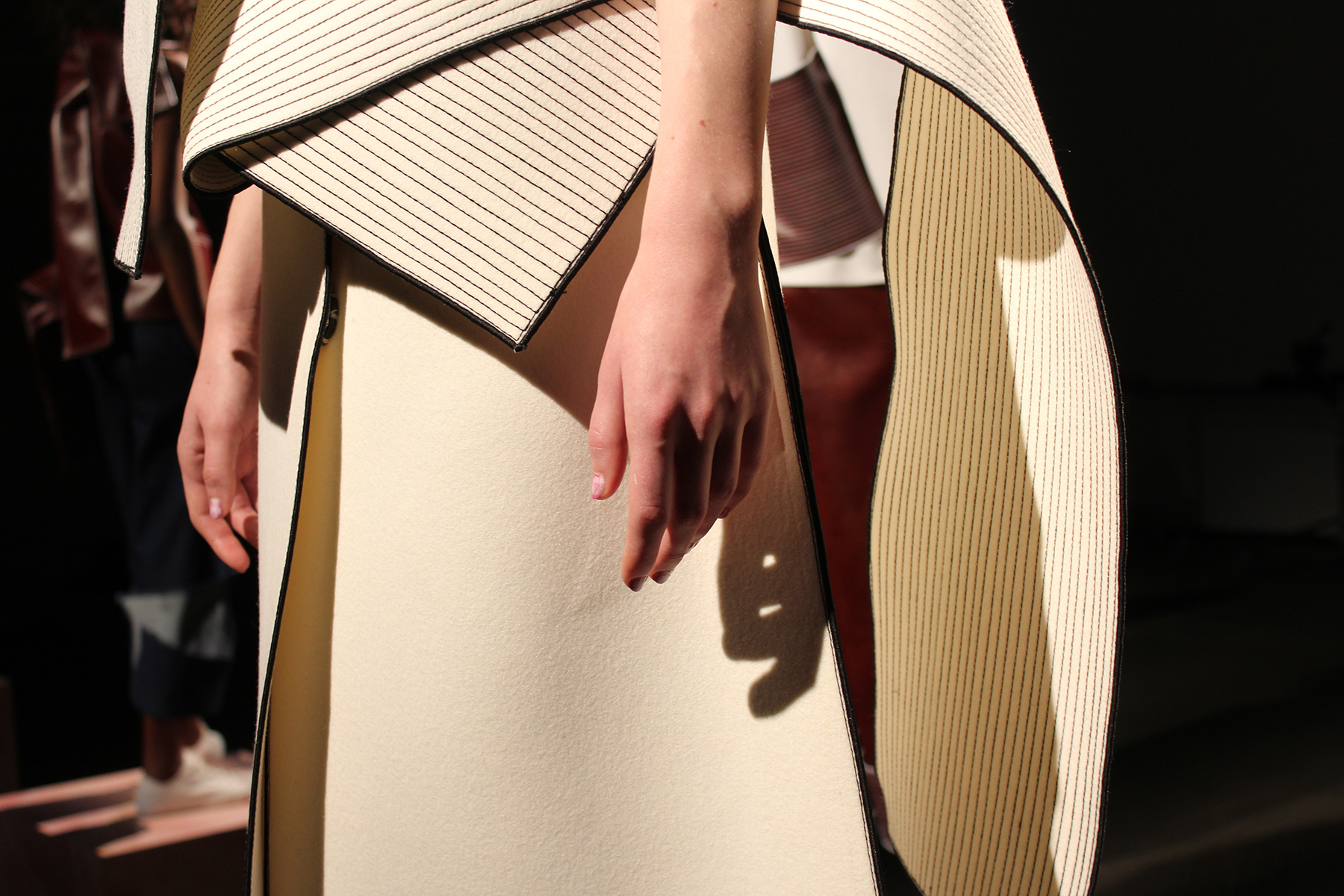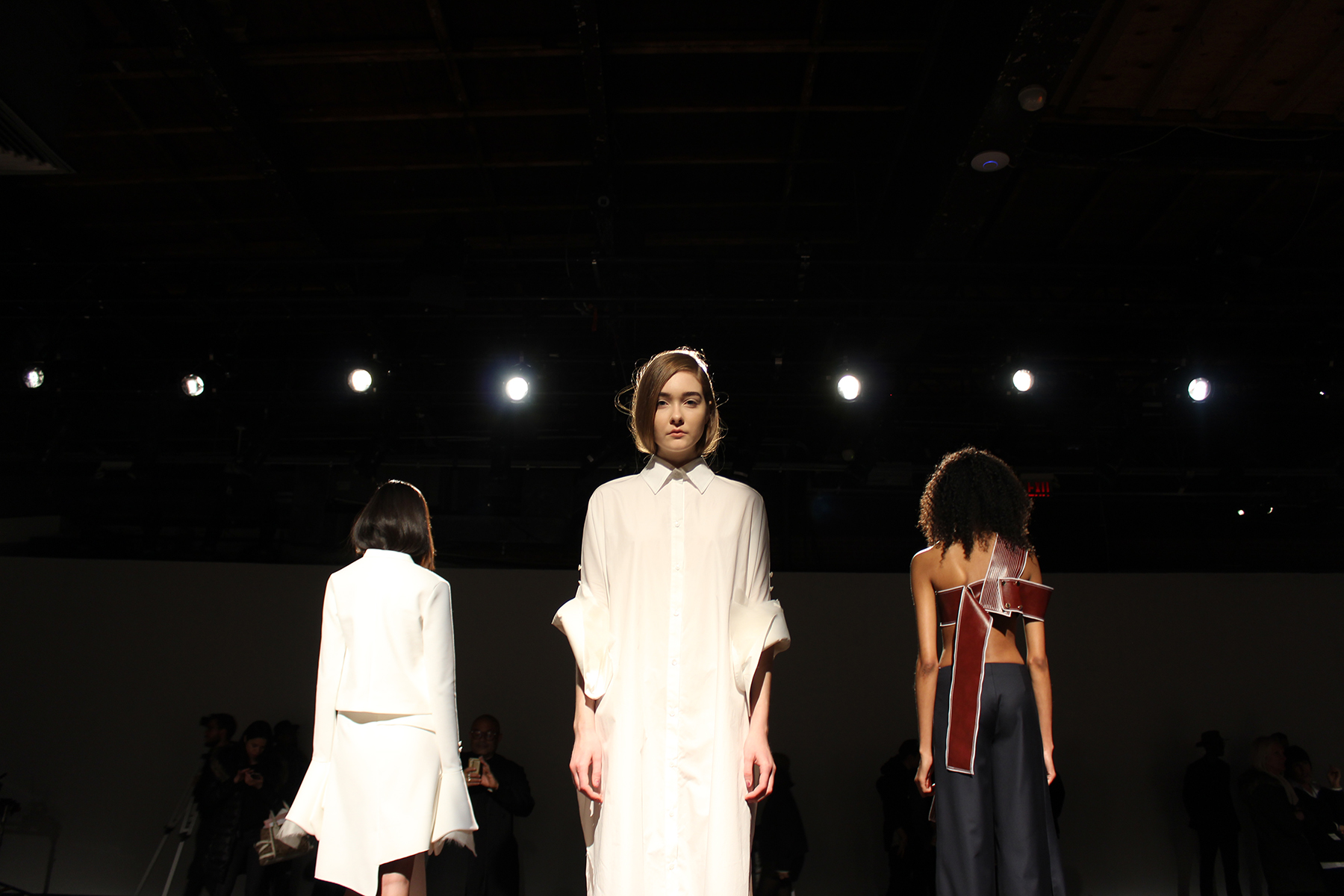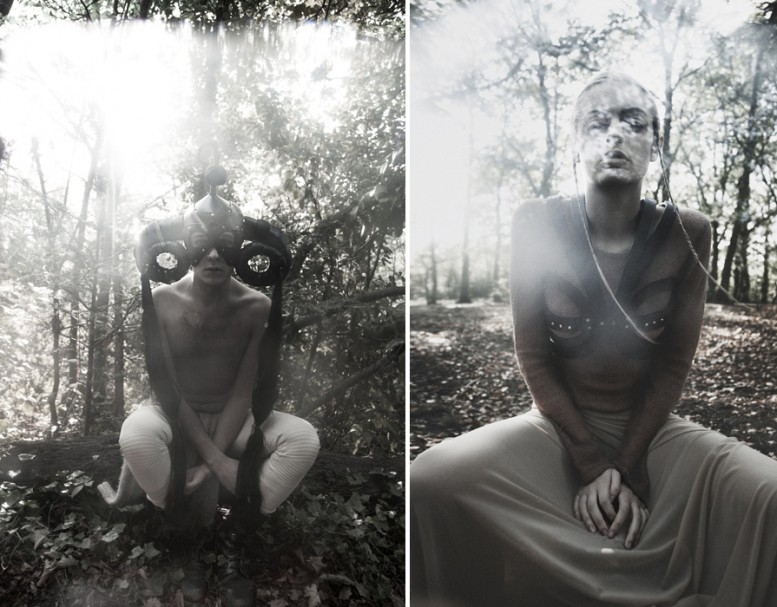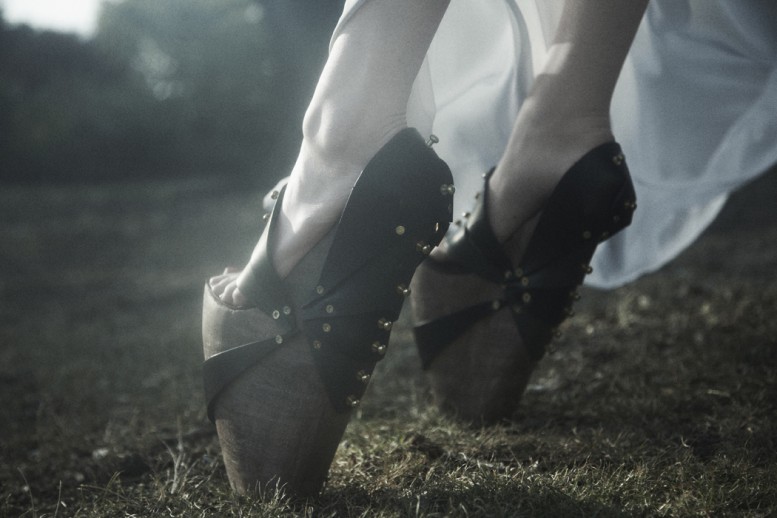For the Avant premiere of AW24, MM6 explores the liminal state of a silhouette morphing between urban cool and couture refinement. Looks hover in limbo. Elegance with wit, puns and double entendres. Clothes that aren’t ready-to-wear: they’re ready when worn, molding to the character of the wearer. Oblique references to Man Ray bring an undercurrent of bohemian elegance, evoking artists, celebrities, friends, lovers and other singular types who move through life like it’s a work of art. Characters inhabiting an uncannily parallel world, with unexpected textures, raw finishes and, of course, white paint.
The familiar skews obscure as staples and archival garments adopt new attitudes, blending minimalism with maximalism on vintage-leaning pieces and riffing on classic masculine codes of dress, with cleverly placed darts reconfiguring silhouettes and tailoring language extended to pieces considered outside the traditional tailoring realm.
Pockets come to the fore as functional, multiple, exaggerated emblems of utility, with asymmetrical placements creating critical distance from the usual technical sportswear tropes.
For night, a bedding theme plays out in Lycra bodysuits and dresses in an allover trompe l’oeil quilt print as well as on a pink t-shirt with a flocked Party Bear motif lifted from an old kids’ duvet. True to MM6 codes, humble materials become ornamental: the lining of a black dress is pulled out, twisted and looped around the neck to create intriguing yet elegant volumes. Waistbands are flipped to create couture-like tulip hem effects, and tops are slashed with zips, sexing up something quite mundane. Roughly hewn “replacement” panels on pants suggest customization as hard-loved, well-worn clothing, like sun-bleached ribbed knits and ultra-wrinkled stonewashed denim, take on a new personality. A white cotton shirt, biker jacket and trench coat are gutted and reconstructed with all the details flattened out, their open collars and cuffs sewn into place permanently.
As if lifted from a construction site, a bucket and a rubble sack join the MM6 accessories universe as a molded EVA bucket bag and a tote. Footwear additions include a cream version of the Anatomic clog, a vulcanized lace-up, the Stitch-Out Anatomic boot with a raised ridge detail on the toe and the Tube boot with an anatomic toe, cigarillo heel and wide shaft in suede. Throughout, a sleek monochromatic palette of black, white, camel, gray and chalk is enlivened with shades of green and jolts of pink.
The season also marks the launch of the first ready-to-wear collaboration with Salomon: a capsule of minimalist classics — a five-zip mackintosh, a five-pocket jean, a shell jacket with long body zips, a classic men’s tuck-in shirt — are made from bonded Gore-Tex, bringing an almost alien functionality to a cityscape. The complementary Seamless line blends influences from compression base layers worn by athletes to speed recovery and MM6 bodysuits on a compression top, leggings, arm warmers and a bodysuit. The Water Bottle bag, the Trailblazer.
Pocket Backpack and a cap complete the lineup. By focusing on simple gestures that transform everyday dressing, MM6 continues its exploration of clothing, form and wearability. Pieces spark an immediate connection and play on the duality of perception, slipping easily into a wardrobe purposefully prepared to let personality shine through.

